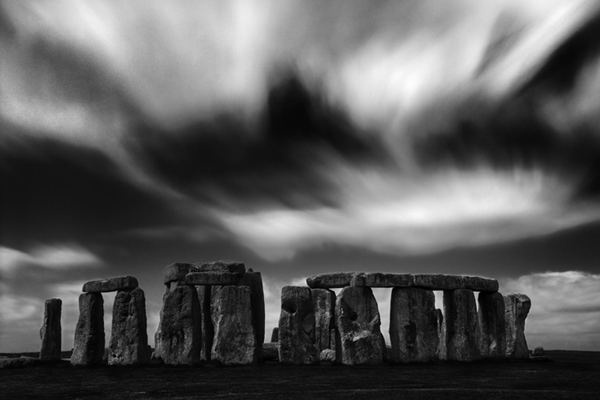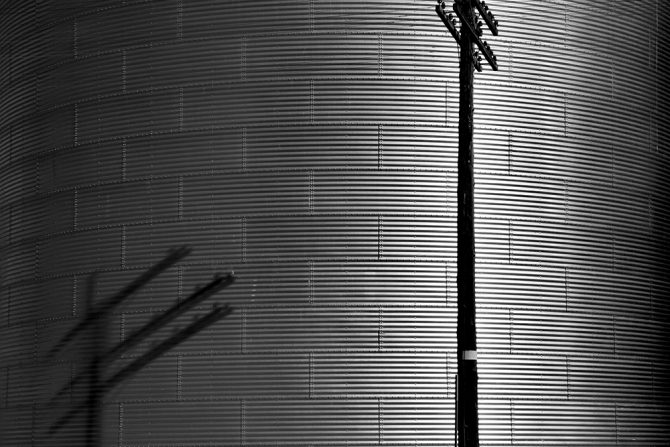Tag: interview
June 14, 2017
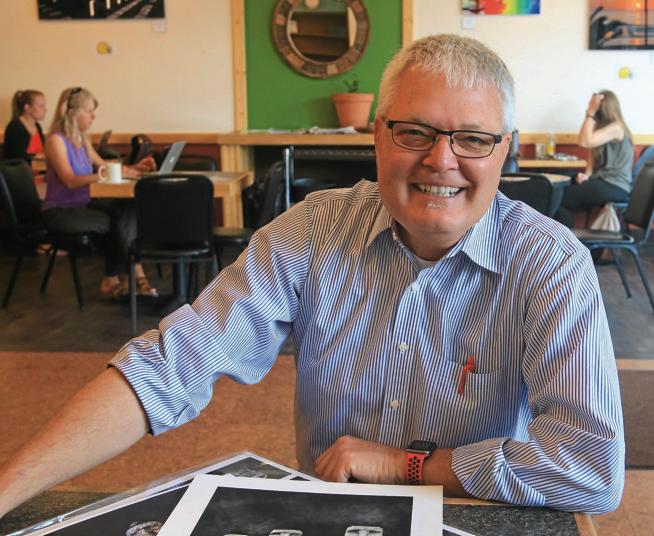
Photographer travels the world to capture black-and-white images
Cole Thompson work on display at Lincoln Gallery in June
By Kenneth Jessen
For the Reporter-Herald
POSTED: 06/14/2017 10:04:18 AM MDT
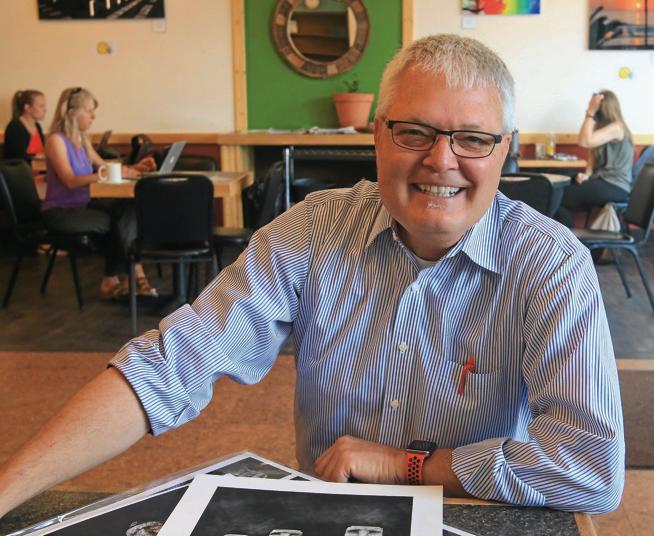
Photographer Cole Thompson enjoys the creative process. His “Moai Sitting for Portraits,” shot on Easter Island, will be on display for the month of June at the Lincoln Gallery. (KENNETH JESSEN / Loveland Reporter-Herald)
Read the full article here:
Cole
P.S. My thanks to Ken for such a nice article!
P.P.S. My special thanks for Ken for getting me to smile, I NEVER smile in photographs!
May 18, 2017
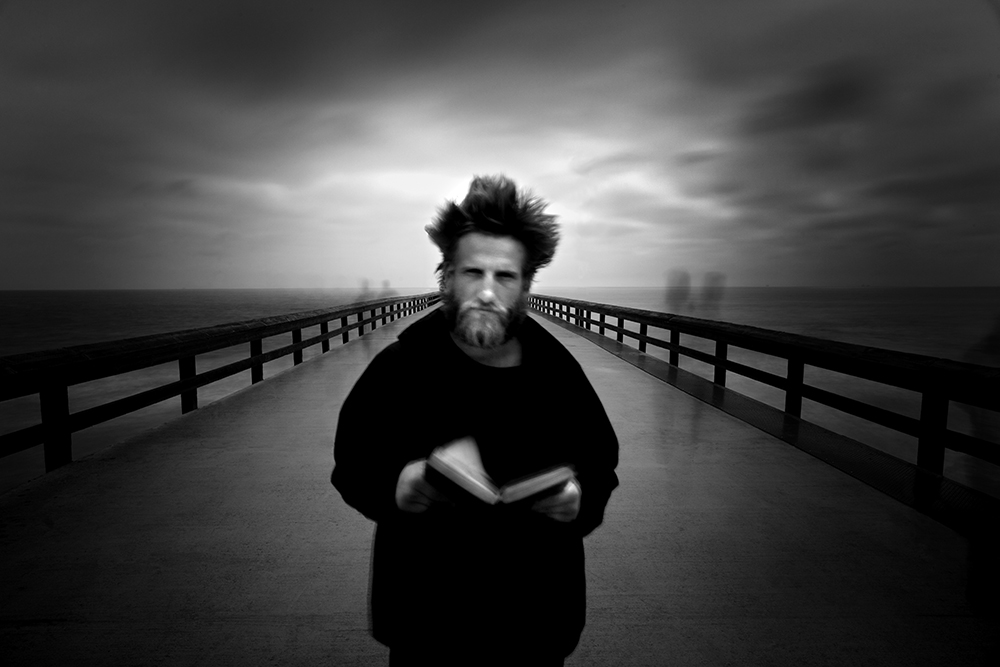
https://thisweekinphoto.com/angel-gabriel-cole-thompson-bts-15/
May 3, 2017
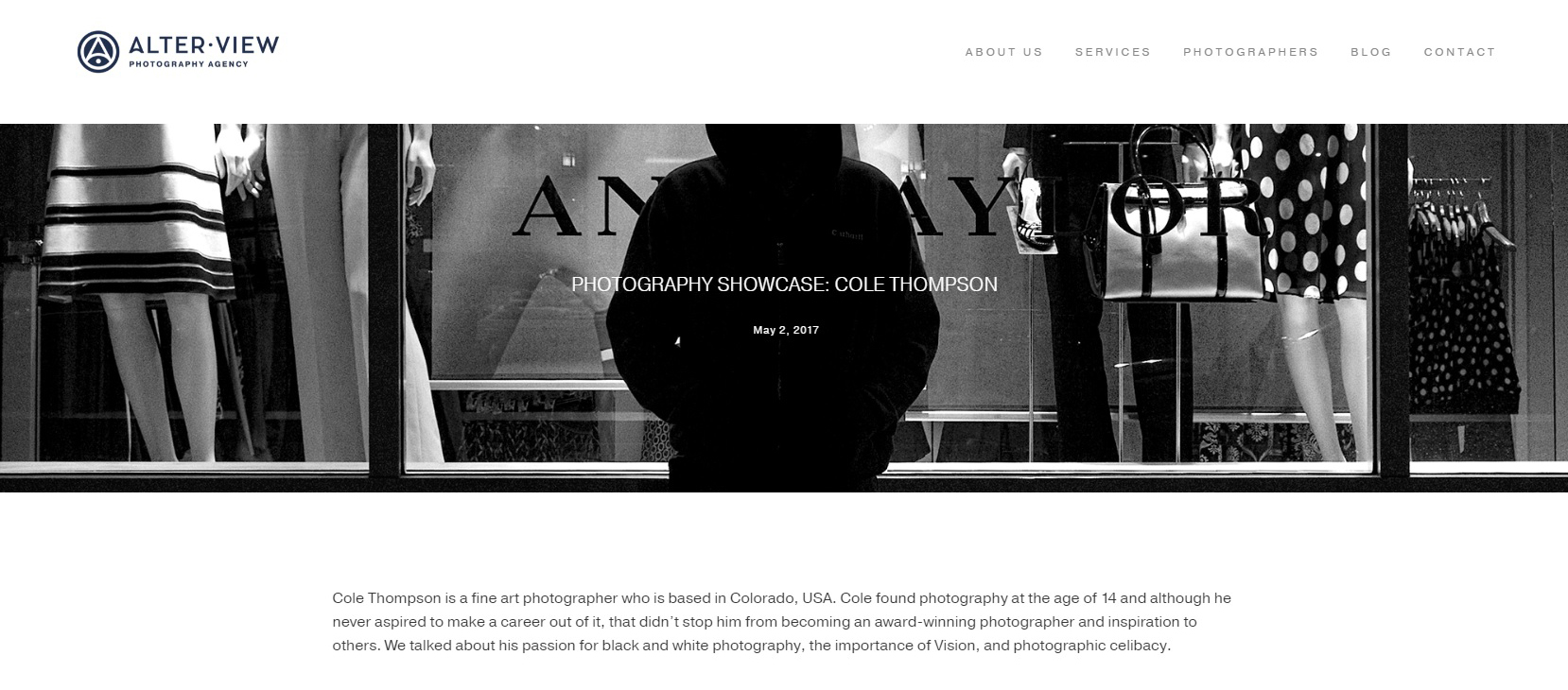
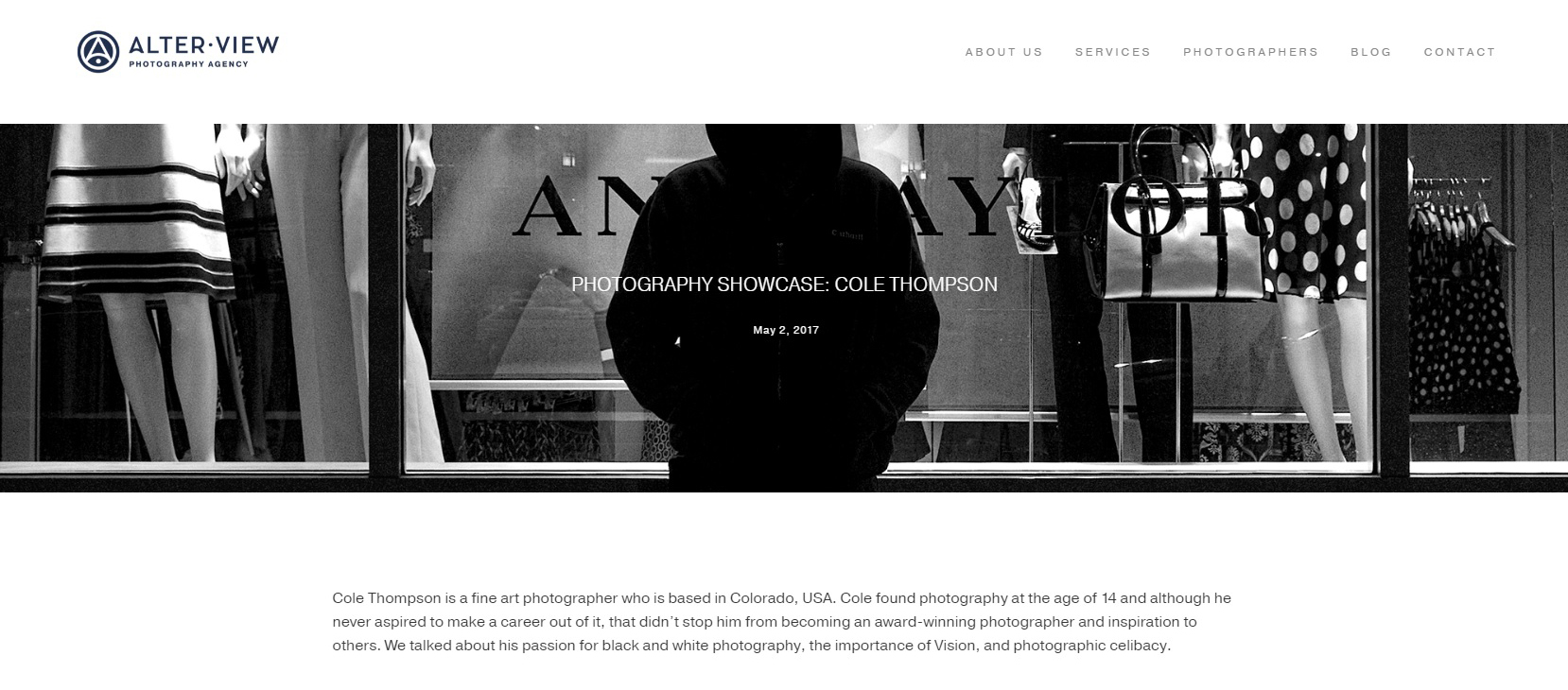
Over the last couple of weeks I have had the pleasure to speak with Dasha from Alter-View.
The result is this interview:
https://www.alter-view.com/magazine/photography-showcase-cole-thompson
Cole
May 22, 2016
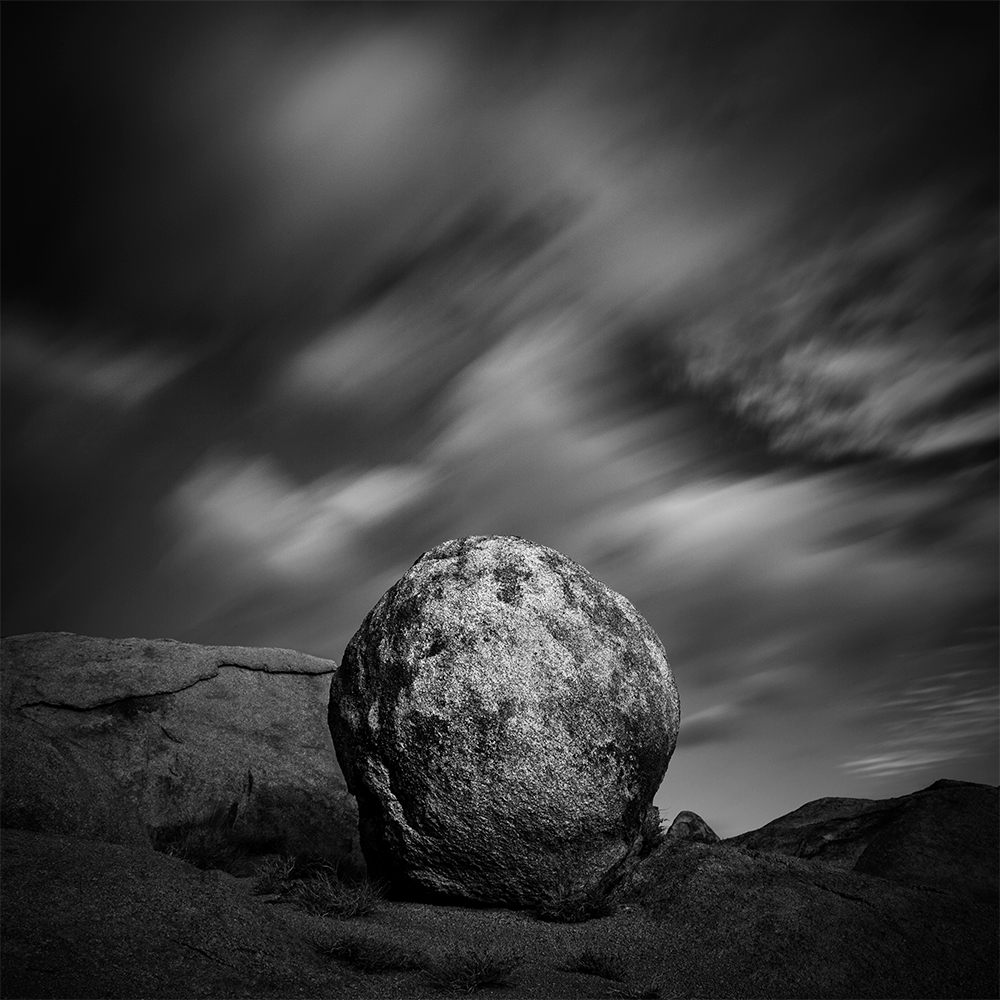
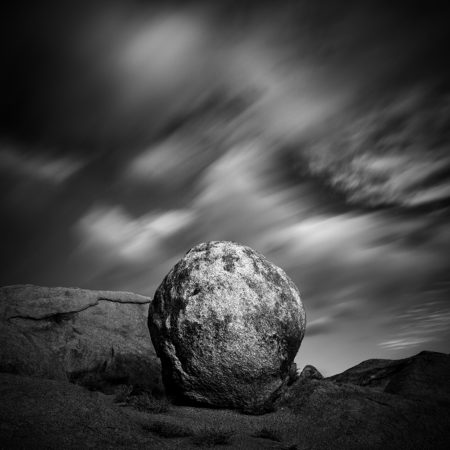
Terra Quantum (https://terra-quantum.net) is a very interesting website. It displays and categorizes landscape images based on geographic location. Choose a country and then explore by location.
It is their 1 year anniversary and you can see the work of 12 featured photographers here: https://www.facebook.com/terraquantum.net/
And they recently interviewed me: https://terra-quantum.net/news/29/
Cole
March 6, 2014
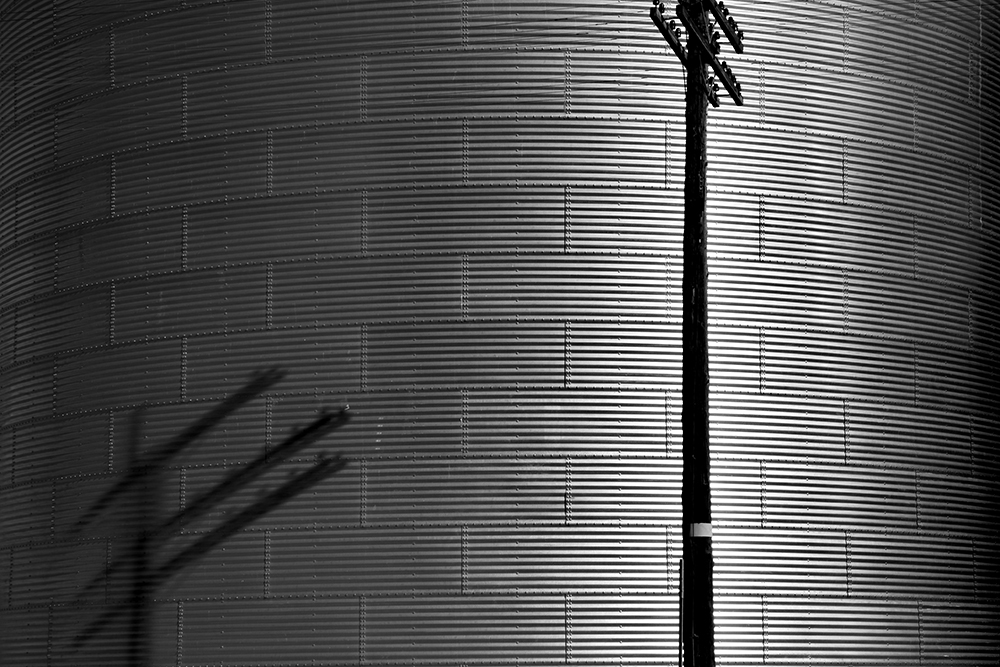
Grain Silo No. 51
Lenswork Daily featured a 3 minute audio excerpt from my interview with Brook Jensen regarding this image.
http://daily.lenswork.com/2014/03/the-art-of-grain-silos-by-cole-thompson.html
August 16, 2013
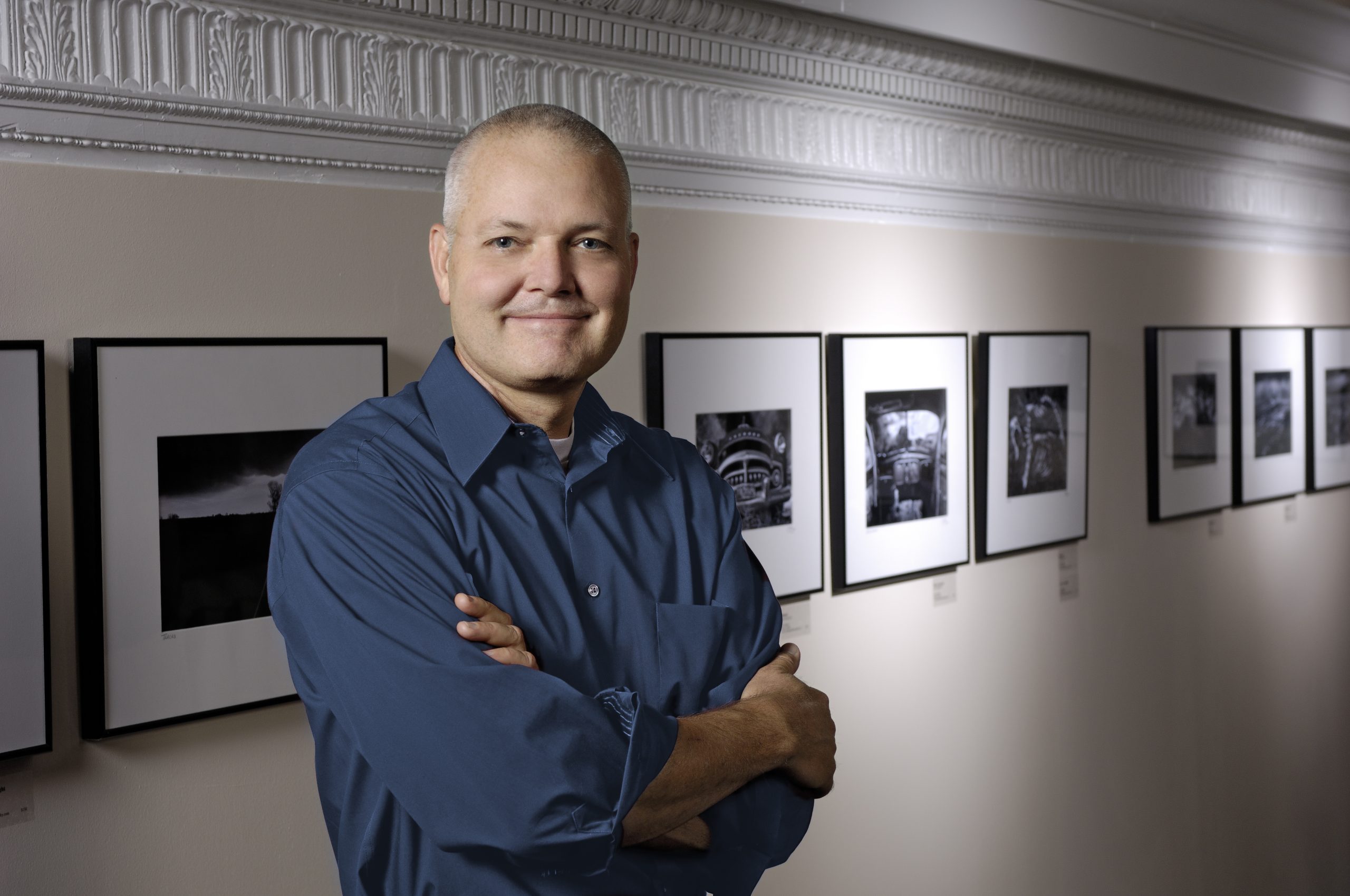
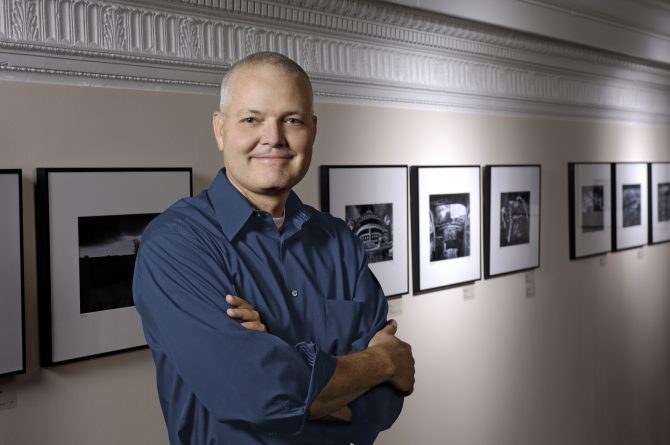
Original Article: http://www.clickinmoms.com/blog/photography-interview-with-fine-art-photographer-cole-thompson/
We love photography interviews and today we are excited to bring you an interview with fine art photographer Cole Thompson. Cole is a brilliant photographer and we are honored to have him here today sharing some of his wisdom with us!
an interview with cole thompson
Can you please touch on your practice of “Photographic Celibacy”? I found this quote on your blog:
“As I analyzed how I was working, I came to the conclusion that when I studied another photographer’s work, I was imprinting their style onto my conscious and subconscious mind. And then when I photographed a scene, I found myself imitating their style rather than seeing it through my own vision. To overcome this tendency I decided to stop looking at the work of other photographer’s, as much as was practically possible.”
This fascinates me! I have been doing a modified version of this for a while. Do you still practice this?
Yes, I have practiced Photographic Celibacy for about 5 years now. What “Photographic Celibacy” means is that I do not look at other photographer’s work. I don’t browse photo books, I don’t look at the images in photo magazines and I don’t seek out other’s work on the internet.
Why don’t I look at the work of others?
Several years ago I attended a portfolio review and during the final interview I showed my work to a gallery owner. He briefly looked at it, brusquely pushed it back to me and said “It looks like you’re trying to imitate Ansel Adams. I replied that I was, because I loved his work! He then said something that would (eventually) change my life.
Ansel’s already done Ansel, what can you show me that demonstrates your vision?
After about two years of wrestling with this I finally had my epiphany: I was never going to do Ansel better than Ansel did Ansel, and so was my goal to be the world’s best Ansel Adams imitator?
Armed with this epiphany, I had this great desire to develop my own Vision, but what exactly was Vision? After a lot of reading and thinking I came to the conclusion that Vision is simply the unique way that I see the world because of my life experiences. I see things differently than others because I’ve had different experiences.
I also concluded that Vision is not developed, but discovered. My vision was already there, created by my life experiences, and what I needed to do was to find and follow it. I was so busy seeing the world through the eyes of other’s images that I was not seeing through my Vision.
I noticed that when I studied the work of others I would then try to recreate their look and sometimes even try to copy some of their specific images! I concluded that to be able to follow my Vision, I needed to stop immersing myself in their Vision.
I knew I couldn’t erase a lifetime of images that were stored in my head, but my theory was that if I stopped focusing on their work, I could more easily find my Vision. And as time went on I found that the influence of those stored images diminished and my Vision came out more and more.
Has it worked? Yes, since pursuing Photographic Celibacy my work is better, more diverse and most importantly, it really is mine. One of the great advantages I’m now enjoying is that when I go to a location to work, such as Iceland this September, I don’t have any idea of what others have done before me and I’ll not be tempted to copy their work.
This idea of Photographic Celibacy is not always well received by others. What I often hear is “I love looking at the work of others and it inspires me.”
I can only speak from my own experience, but focusing on the work of others only inspired me to get out and copy. Additionally, I found that looking at their work caused me to compare myself to others, which is not a positive thing. I would become envious of someone else’s work and skills, which caused me to overlook my own talents and which stunted my growth.
I also found myself jumping from subject to subject and technique to technique as fads came and went. I was like the wheat in the field, blown about with every wind, always following but never leading.
So, will I practice Photographic Celibacy forever? I doubt it, but for right now, it works for me and I enjoy going down my own path rather than following others on theirs.
How do you cultivate your vision?
Here are some of the things I do to stay in touch with my vision:
- I don’t study the work of others.
- I don’t follow the rules of photography. Following rules is the exact opposite of following one’s vision. Over the years I have had people look at my images and tell me that my image didn’t follow the rule of thirds or that I shouldn’t have centered my subject. I just smile and think how grateful I am that I don’t know or follow the rules!
- I set aside “alone time” to create. I’ve tried to work while on family vacations or while out with other photographers, but I just cannot focus on my vision with others around.
- I get away for several days to create. I find it takes me 2-3 days just to get my head clear and to start to “see.”
- I read the Edward Weston Day Books. I love Weston’s images, but I love his attitudes as an artist even more and they put me in the right mood to create.
- I listen to the Beatles. Upon achieving success, artists are then afraid to stray outside of their successful formula. But over time they become stagnant and lose their creative edge because they weren’t growing. What has always impressed me about the Beatles is how they didn’t do that, their music was always changing and pushing new frontiers. Their music reminds me to grow and change with my art.
- I cultivate attitudes that allow me to create unencumbered. An important attitude I cultivate is to not care what others think about my work; I create for myself and I never consider how others will react to it, if they will like it or if it will sell. My only goal is to create art that I love.
- Simplify. I have found that it’s easy for me to fall in love with equipment and processes and not pay enough attention to my Vision. To keep that in check, I have embarked on a program of simplification; I have simplified my equipment and processes to the bare essentials so to minimize distractions.
The term “Fine Art” is a bit of conundrum to me. How do you define this term?
This topic has been on my mind for several years and I’m currently writing a blog entry about it.
How would I define fine art? My short answer is: I wouldn’t. I mean, who cares? There will never be a definition that everyone agrees upon and it really doesn’t matter to me what someone else says anyway. If I love an image and then find out that it’s not considered fine art, do I love it any less?
The only thing that I concern myself with is: Do I like the image and would I hang it on my wall?
I have a friend who looked at one of my images and said: this is not fine art because people don’t smile in fine art.

This image may or may not be fine art, but I don’t think it’s because the girl smiled!
I think each of us defines what fine art is and it doesn’t really matter what anyone else thinks.
What is your photographic belief system? What rules (or lack of them) guide your process from idea to execution?
I do have some principles that I follow:
- I must create from my own vision.
- To create my best work, I must create for myself.
- I never ask others about my work.
- I create because I love to; not to win contests, sell art or to win praise.
- I will keep things simple: my equipment, my processes and my images.
When did your shift from photographer to artist happen? Did you see or feel a change in your images after this realization?
My “conversion” to artist took place after I returned to photography in 2004, after a 35 year absence during which I raised a family and built a business. Upon returning I was fortunate to meet a woman who became my mentor and luckily for me she was an artist who used photography (as opposed to a “photographer”).
She saw my rigid photographic rules as an impediment to my creative growth and over time she helped me to understand that it was okay to be a photographer and to document, but it was also okay to be an artist and to create.
Has my work changed since I achieved this mental shift? Yes, very much so.

This is “The Angel Gabriel” and I consider this to be the first image that I really created as an artist, armed with an awareness of my vision. First let me tell the story of how this image was taken:
This is the Angel Gabriel. I met him on the Newport Beach pier as he was eating French Fries out of a trash can. He was homeless and hungry. I asked him if he would help me with a photograph and in return, I would buy him lunch.
The pier was very crowded and I wanted to take a 30 second exposure so that everyone would disappear except Gabriel. We tried a few shots and then Gabriel wanted to hold his bible. The image worked and the only people you can see besides Gabriel are those “ghosts” who lingered long enough for the camera.
Gabriel and I then went into a restaurant to share a meal; he ordered steak with mushrooms and onions. When it came, he ate it with his hands. I discovered he was Romanian and so am I, so we talked about Romania. He was simple, kind and a pleasure to talk with. I asked Gabriel how I might contact him, in case I sold some of the photographs and wanted to share the money with him.
He said I should give the money to someone who could really use it; that he had everything that he needed. Then the Angel Gabriel walked away, content and carrying his only two possessions: a Bible and a bed roll.
When I asked Gabriel to stand there on that pier, I had an immediate “Vision” of how I wanted that image to look; I could “see” it in my mind’s eye. As a photographer I’m not sure I would have then taken the next step to manipulate the image to match that Vision, but as an artist I was willing to do that.
How has my work changed since I made this mental shift to artist? Most of my past work as a photographer was very traditional landscapes, and now my work has expanded into other areas. It is more conceptual and I’d say “simpler.” I still love landscapes, it’s in my blood, but even those landscapes have changed and become more conceptual.

Swimming Towards the Light
This is an image I never would have been able to create as a photographer because I hadn’t yet found my Vision and I was too bound by rules which limited my thinking.

Harbinger No. 1
Sometimes I find that my new images hearken back to my landscape roots, but are heavily influenced by my new thinking. This is a landscape, but it has been manipulated to match my vision.

Ceiling Lamp, Mourning Dove Ranch
This is a series that I may not have pursued as a photographer. I was standing in a hotel lobby waiting to check out when I looked up and noticed how cool a ceiling lamp looked from directly below. I moved the furniture out of the way, lay on my back and just looked at it with fascination. That was the beginning of the Ceiling Lamp series.

Auschwitz No. 14
“The Ghosts of Auschwitz-Birkenau” series is about as different from my traditional work as I could get. It is a series of ghost images created at Auschwitz-Birkenau.
Has my work changed since I made the mental shift to artist? Yes, and in my opinion for the better. Most importantly I’m happier with my work because I’m forging new ground and the work is truly mine. I am now proud of my images because of how I feel about them, not because of the awards, exhibitions or accolades they have received.
What are your views on photographic manipulation?
When I thought like a photographer the idea of manipulating an image was abhorrent to me, but now when someone asks “do you manipulate your images?” I reply “Yes!” As an artist it is my job to manipulate my images, to bring them into compliance with my vision. I am not documenting a scene, but showing others how I see the world.
As a photographer I used to think that my photographs told “the” truth and now I understand that they really only tell “a” truth. Really, everything I did as photographer manipulated the image; how I framed the shot, the focal length I chose, my exposure, how I cropped the image and how I processed it. Everything I did changed the story that my images told.
Once I came to appreciate this I realized that manipulating my images was not a photographic sin! I was suddenly free to “create” rather than “capture.” This opened up the creative process to me and it was very liberating.
When I look back now, I am mystified at how I could have felt such guilt in manipulating an image!
Are there ways that I personally wouldn’t manipulate an image? Sure, but not because there’s anything wrong with those manipulations, but rather because they don’t fit into my Vision or style.
Not long ago I had someone anonymously write and say that they could tell by the shadows that I had inserted this cloud into my image:

Harbinger No. 1
I was offended, because I had not inserted that cloud!
I had to ask myself why I was so offended at that accusation, regardless if it were true or not. Was it because I still clung to some of my old “photographer ethics” which said such a thing was wrong and I didn’t want anyone to think I had crossed that line?
Each person must decide for themselves what they are comfortable doing and I have long ago stopped judging what others do and just focus on my art.
What advice would you give a photographer that would like to move into the fine art realm?
I’d ask them why they want to get into fine art. If the answer is “to make money” then I’d have a good long laugh and wish them well. But if it’s because they have this burning desire to create work that they love, then I’d give them this advice:
Believe in yourself and have faith in your creative abilities. I was raised in a home with no exposure to art or music and I came away convinced that I was born without a creative gene. That’s part of the reason I pursued photography, I thought that by becoming a great technician I could compensate for my lack of creative abilities. Fortunately I learned that I do have those abilities; that they were simply undiscovered and atrophied from lack of use. I also came away from my experience with a strong conviction that every single person has these creative abilities. Guaranteed!
Find your vision. How do you see the world differently because of your life experiences? It’s a long and hard road to find your vision, mine took two years, but it is essential to create work that you love and are proud of.
Throw away your photographer mentality and let yourself go! Break out of your photographer role; do anything and everything and break all the rules.
Think of yourself as an artist. To help me make this mental shift I stopped saying things like “take a photo” and instead said “create an image.” I called myself an artist and referred to my work as art. At first that was hard for me to do because I felt a fraud, but over time I started believing it and actually became it. These were small things, but they helped remind me of what I wanted to become.
Create out of love and not for money or recognition. I cannot create my best work if my motives are fame or fortune. For this reason I have come to conclude that money and art do not mix.
Be independent. Don’t ask people what they think of your work and don’t care either. Create only to please yourself because at the end of the day, it’s only you, your art and how you feel about it.
Focus on the creative. As important as good equipment and technical skills are, they alone do not create great images. Focus on the creative and use your equipment and technical skills to support your Vision.
Have fun. Creating should be fun and not a job, and not something that must be completed by a certain deadline. Those things are “creativity killers!”
What is your favorite image or series of images in your portfolio and why?
You might as well ask which of my children is my favorite child. That’s impossible for me to answer!
One of my favorites is The Angel Gabriel above, but I have several other favorites:

Flaming Dahlia
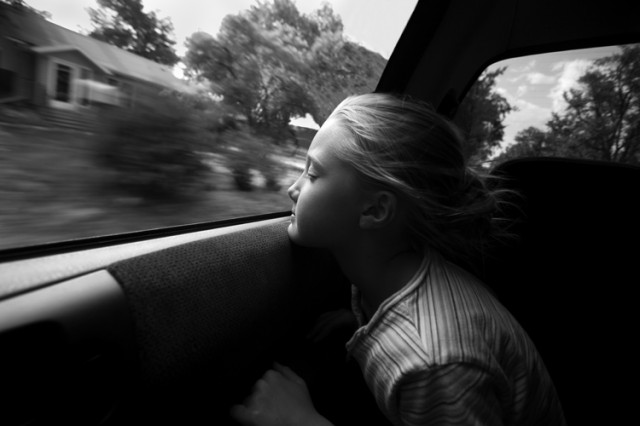
Windsurfing

Auschwitz No. 14

Old Car Interior

Lone Man No. 20

Primordial Soup

Monolith No. 10

John Holland Memorial
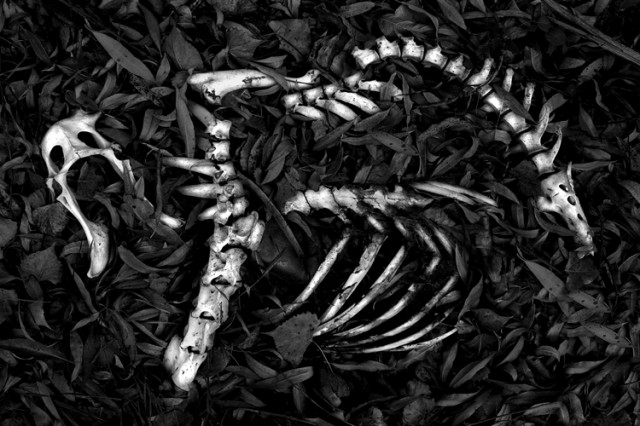
Skeleton

Dunes of Nude No. 43
When you have a vision you want to create, how do you solve the problem of how to do it? For instance, if you want to create a certain look or effect, where do you turn to learn new techniques? Do you learn by experimenting or turn to books or videos?
I am self taught and have never taken a photography class or workshop. I like to learn by doing and experimenting and so when I have a vision of what my image should look like and have reached the end of my technical skills, I simply start trying things. I have always figured something out, and while it may not always be an elegant approach, it works.
Popular Photography called me the “Photoshop Heretic” because I use Photoshop in an unorthodox way. I used to be embarrassed about that, but now realize that it doesn’t matter how you get there, as long as you do get there.
People are surprised to learn that I create most all of my images using only six tools in Photoshop. I have an extremely simple workflow and most of my creative work is done through dodging and burning. You can read more about my workflow here.
Each person has their own way of learning, and mine is “hands on.” Others read the manual, some take a class and others prefer to watch a YouTube video.
One thing I do caution people about is becoming addicted to new processes and techniques. There are certain fads that sweep through the photographic community such as HDR, and then you’ll see everyone doing it. Then it will be shift-tilt, and then long exposures and then something else.
From my experience, Vision does not flow out of fads or techniques but rather it’s the other way around: Vision can drive you to use certain techniques. That’s why I always recommend pursuing the creative first and then learning the skills needed to support that vision.
How important is gear in your work?
“A photographer went to a socialite party in New York. As he entered the front door, the host said ‘I love your pictures – they’re wonderful; you must have a fantastic camera.’ He said nothing until dinner was finished, then:
‘That was a wonderful dinner; you must have a terrific Stove.’” Sam Haskins
For many years I thought I had to have the best equipment and a wide range of technical skills before I could create good images. I reasoned that unless the tools and technical skills were in place, I could not execute my ideas.
But in the end I spent 99% of my time on equipment and processes and neglected the creative. Photography became an expensive hobby as I collected equipment, accessories and learned tons of new processes. The problem was that they became my goal, not a tool to achieve a goal.
I see a lot of photographers who focus on equipment. It is easy to detect this kind of thinking by the questions people ask me when looking at my images. Often times the questions are:
“What camera and lens did you use?”
“What were your settings?”
“Did you use the XYZ plug-in to convert this image to black and white?”
These questions imply that the key to my image’s success was equipment or settings, and if they just could duplicate these, they could create such an image. Wrong mon ami!
What is the role of equipment in the creative process? Let me introduce you to “Cole’s Rule of Thirds.”
Cole’s Rule of Thirds
A great image is comprised of 1/3 vision, 1/3 the shot and 1/3 processing
A great image begins and ends with your vision. Vision is a tough concept to describe, but I think each of us instinctively knows how we want our image to look, and our job as an artist is to bring that image into compliance with our vision.
When we pursue an image with vision, then equipment and process becomes the servant and the creative process is the master. It’s only then that great images can occur.
Vision is everything.
How important is equipment? It’s important but not nearly as important as we’d like to think. If I had to choose between the world’s best camera and no vision, or an old Kodak Brownie accompanied with Vision; I’ll happily take the Brownie.
What has been your biggest photography related challenge?
Getting over myself.
Eliminating my desire to please others.
Wanting and needing validation.
I used to think that if I could please someone else; a critic, a gallery owner or professor, then I would feel good about myself and my work. I believed that if my work was chosen for an exhibition or I had my work published, then birds would sing, the sun would shine and life would be wonderful!
But what I instead found was the accolades were great for a few minutes, but then it was all over. In the morning it was still me, my images and how I felt about them. Receiving the recognition was nice, but it wasn’t a substitute for feeling good about my work.
That’s one of the great benefits of getting older, you start to get over yourself and realize that what you think about your work is much more important than what others think of your work.
You work exclusively in black and white for your art work. Are your personal photos also black and white or do you navigate into color for your personal memories? Do you have trouble letting go of your art in your personal photos?
All of my family photos are shot on an iPhone 5 and in color! On a family vacation, all I want to do is “point and shoot” without any thinking.

Kihei, Hawaii – 2013
What is your definition of success? Have you achieved this?
For many years I pursued the “standard” definition of success: fame, fortune, to be represented in a big-name gallery and to have a book published. For too long I coveted those things without ever stopping to ask if this was “my” definitions of success.
Once I started to achieve those things, they brought about a temporary pleasure, but also an emptiness that left me wondering, is this it? I started to ask what was it that “I” really wanted and it came down to this:
To do what I want and to create work that I love.
And so to a great degree I have achieved success. I create for myself, I love my work (some more than others) and I get to travel to incredible places. Really, what more could I want photographically?
I think it’s also important to note that photography is not my life, it is something that I do that makes my life better.
What is your view of our fast-paced digital world? Do you think that iPhoneography or similar is a benefit or a detriment to the photographic artist?
I think iPhoneography is just another tool and if it’s useful to serve your vision, then it’s a good thing. Let me tell a story that just happened to me.
I was in St. Petersburg, Russia photographing some trees at Peterhof. While there I also pulled out my iPhone and took a picture for the family album (I am the designated picture taker in our family). When I got home and began processing the trees, I didn’t find a single image that I liked. Disappointed and about to give up, I remembered that single image I took with my iPhone.
Compositionally, the iPhone image worked but I doubted that it could be printed to any reasonable size since it was shot with an iPhone and then severely cropped into a panorama. But I was pleasantly surprised when I printed it at 15 inches wide and it looked great!

Peterhof
Should I not take this image as seriously as my others, simply because it was created on an iPhone? My personal philosophy is: all that matters is the image and do I like it?
Cameras, lenses and all the rest are simply tools. It’s vision, imagination and breaking the rules that creates great images.
Regarding the larger question of digital versus the old ways; I lived with those old ways for many years (I started in the darkroom in 1968) and I have to tell you that while I have some fond memories, I would never go back. I love the digital world and my work has never looked better.
Thank you Cole for spending some time with us today and sharing your insights with us!
Would you like to see even more of Cole’s wonderful photography? Make sure you visit his website, blog, and facebook to view his images. Don’t forget to also follow him on twitter and pinterest!
May 3, 2013

http://brentmailphotography.com/photography-interview/cole-thompson-interview.html#comments
Cole Thompson Interview
Amazing Fine Art Photographer
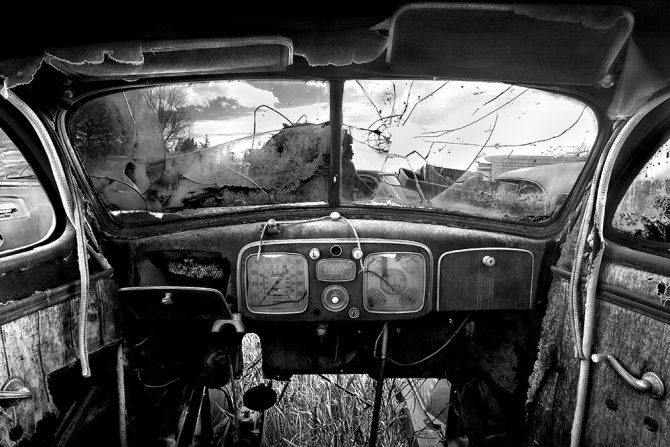
Who is Cole Thompson?
Brent: Cole, can you give us a little bit of background your photography and your life?
Cole: I grew up travelling; my father was in the Air Force and we travelled a lot. When he retired, we landed in Rochester, New York and it was there, as a 14-year old boy, that I discovered photography. I decided that photography was my destiny; I believed in that as a child and I still believe it today.
I believed that photography was my destiny; I believed that as a child and I still believe it today.
I was out hiking one day with a friend when we stumbled across an old house and my friend told me that it had been owned by George Eastman. Living in Rochester, everyone knows about Kodak and George Eastman, and so I read his biography. Before I had completed that book I had decided that I was destined to be a photographer. It sounds kind of silly saying, but before I’d even taken a photo or seen a print come up in the dark room, I just knew that’s what I was supposed to be. From there I taught myself photography and it became my life. At age 17 I decided I would not pursue photography in college because I feared that if I earned my living as a photographer, I would lose my passion for it. So instead I pursued business and built a career and family. Because of those responsibilities I didn’t have much time for my photography until 30 years later when picked it back up after 30 years.
Brent: Tell us why you moved to Colorado and how has that affected your photography?
Cole: We moved to Colorado from Los Angeles. Los Angeles is a crazy place, a crowded place, an expensive place and it wasn’t the best place to raise a family (I’ve got 5 children) and so we moved here in 1993. I know that a lot of people might imagine that with all of the beautiful scenery in Colorado that it might have affected me, but it has not. While my roots are in landscape, and I still do some, I really don’t consider myself a landscape photographer.
Cole’s Favorite Images
Brent:Thanks, Cole. Now, let’s have a look at your favorite images. You’ve sent me three of your favorite images that you’ve taken in the past. Let’s run through them quickly. Can you tell us about the photos and the thought that went into creating these images?
Cole: The first one is “The Angel Gabriel” which I created in 2006 and it’s of a homeless man on the Newport Beach Pier in California. It was a long exposure and so it appears that he’s standing there alone with only a couple of ghosts in the background.
… a homeless man on the Newport Beach Pier in California.
There are two things significant to me about this image. First of all was the experience. I was shooting the pier using long exposures, it was crowded and I was using a 30 sec exposure so that almost all people disappeared. While the images were interesting, it was missing something, a subject. So I was looking around trying to find someone who I could use when I saw this man, Gabriel, digging some French fries out of a trash can and eating them. I went over and I said “excuse me? Would you help me with a photograph?” He looked at me distrustfully like we might look at a homeless person, I told him “No really, I just need you to help me with a photograph and if you do, I’d be happy to buy you lunch.” So he agreed and we took a couple of photos which were just “okay.” Then he wanted to take one holding his bible, and this is the resulting image.
Afterwards I took him to the restaurant at the end of the pier, it was very nice restaurant and the people were looking at me because I’m bringing in this barefooted, dirty homeless person. We sat down and I said “please, order anything you’d like” and he responded that he hadn’t had a steak in years and that he’d like it with mushroom and onions. When the server brought his steak, Gabriel picked it up with his hands and ate it. All the while the restaurant staff is giving me the “why did you bring him in here” look.
During our conversation I learned that he was Romanian and so am I and so we had something to talk about. I learned that his family had escaped Romania when the dictator Ceausescu fell from power and that his father lived nearby.
After the meal and as I was thanking him, I said “Gabriel, give me your father’s address and if I sell any of these images, I’d be happy to send you some of the money.” And he said “No, why don’t you give it someone who really needs it? I’ve got all that I need.” And Gabriel walked away with his only two possessions: a bedroll and a bible.
The second reason this image is so important to me is that it was the first time that I really exercised my vision and “created an image” rather than “taking a photograph.” I believe that a photographer tends to document reality while an artist creates. This was the first time I felt that I had done that.
…the reason that this image is so important to me is that it was the first time that I really exercised my vision and had “created an image” rather than “taken a photograph.
Long Exposure Equipment
Brent: That is awesome. I just love this image. Gabriel is right in the center of the pier and there are a couple of long exposure ghosts in the background. Tell me Cole, what kind of filter did you use to photograph this? What are the technical aspects of this image?
Cole: For my long exposure work, I typically use two filters stacked one on top of the other. One is a Singh-Ray Vari-ND; it’s an adjustable ND filter that can go from 2 to 8 stops of neutral density. It works like a polarizer and this is important to because you can open up the filter to let enough light in to compose and focus, and then you can stop it down for your exposure. On top of that filter I’ll stack a 5 stop fixed ND filter which gives me 13 stops of neutral density, which is usually enough to give me a 30-second exposure in bright sunlight. I’ll sometimes stack a 10 stop filter in place of the 5 and that allows me to get several minutes of exposure in bright sunlight.
Brent: Do you have a filter holder in front of your lens?
Cole: These are circular filters, I use an 82mm and then fit each of my lenses with a step-up ring so that one set of filters works on all of my lenses. I use large 82mm filter because when you stack them they protrude and vignette the image, so the wider filter helps minimizes that.
Artist or Photographer?
Brent: Just back to the part where you talked about the artist; the difference between the artist and the photographer. When did it start coming into your mindset creating art as opposed to taking photographs?
Cole: Early in my photographic life I was not conscious of such a concept and I’d always considered myself a photographer. In fact, I felt that as a photographer I had a duty to not modify the image. I see now that is silly because everything we do as photographers modifies the image; starting with the lens that we choose, our perspective, how we expose it and how we process it. Everything changes the image. So in a sense, there really is no way to document reality and to capture the truth. A photograph can capture many realities and many truths.
Around 2004 and shortly after I came back to photography, I met a woman who became my mentor. She was an artist first, who began using photography as opposed to me who was a photographer first, and who later become an artist. She continually tried to get through my thick skull that I shouldn’t limit myself to simply taking photographs, but rather I should create images. Over time that concept slowly started to sink in until I woke up one day realizing that I wanted to create. It was a gradual process and it took me about two years until I felt comfortable thinking of myself as an artist.
…I shouldn’t limit myself to simply taking photographs, but rather I should create images.
If someone asked the old Cole the photographer if he “manipulated” his images, he would respond “No!” and be insulted at the very thought of it. But if you ask me now, my response is “Yes! I manipulate what I see with my eyes, into what I see through my vision.” That is what makes an artist, an artist; they create.
Brent: That’s great. Let’s run through the second image, the one where it looks like someone is in water.
Cole: This is called “Swimming Towards the Light.” Many people think this was photographed underwater, but it’s really my daughter swimming laps in a hotel swimming pool. I’m on the 5th floor looking straight down and this image catches her just as she is about to touch the edge of the pool where the light is. And that’s why it is called Swimming Towards the Light. This was taken with a 1/10 sec slow shutter speed to introduce a little bit of blur and movement in the image.
It’s a very simple but conceptual image. I never like to tell people what my images mean to me or what they’re supposed to mean to them, but I do find it interesting to hear what others see in them. I recently gave this image to a friend who is undergoing some pretty serious cancer treatment and it has come to mean something very special to her as she fights her battle. She relates to this image very personally.
Brent: Just going back to the artist within you. You’re actually creating art that obviously mean something to you but it may mean entirely something different to someone else. They will see this image, have a look at it and it’ll create some kind of emotion in them that is entirely different from what you actually created it with.
Cole: Absolutely. And oftentimes my images don’t have any special meaning to me but others find meaning in them. That’s why I don’t like to tell people what they mean, or even hint through the title what the image is supposed to mean. When you look at my image titles, you’ll notice that most are simple numbered titles. I just don’t think that it’s my role to tell people what to think when they look at my art.
People often ask what my images mean. Sometimes they really don’t mean anything, they are just beautiful images.
Brent: And does this image of our daughter in the water mean something to you?
Cole: No, it’s just an image that I saw it in my mind and created. It doesn’t have a deeper meaning for me, but that’s not to say that it can’t have a deeper meaning for other people.
Brent: Great. The last image you sent me, it looks like a concentration camp.
Cole: Yes, this image is “Auschwitz No. 14? and it’s my favorite image from the series “The Ghosts of Auschwitz-Birkenau.” A few years ago I was visiting my son in Ukraine who was serving in the Peace Corps. Because we were so close we decided to visit Poland and the family engaged in discussion to decide what to do while there. I knew that everyone would probably want to see Auschwitz-Birkenau, but I was secretly hoping that we wouldn’t go because I don’t like sad places. But the family out voted me and so off we went.
…it’s my favorite image from the series “The Ghosts of Auschwitz-Birkenau.”
We began with the tour inside buildings where they show you the meticulous records that the Germans kept on each prisoner. I found myself looking at a photograph of a man, who was looking straight into the camera…into my eyes, and all I can think about is how he was then murdered shortly after this photograph was taken. It was surreal and depressing. As we continued through the tour, we saw the infamous piles of clothing, glasses and shoes. I am not prone to claustrophobia but I just could not breathe and I signalled to my family that I was going outside for air.
Once outside, I could breathe easier and I began to walk slowly while looking at my feet. With every step I could not help but wonder who else had walked in these same footsteps and were now dead? I began to wonder, perhaps metaphorically, if their spirit still lingered there today. And then suddenly it hit me: I needed to photograph the spirits of the people who lived and died there. Unfortunately I had less than an hour before the tour bus was going to leave.
So I ran from location to location photographing ghosts. People want to know about the ghosts, are they real? Did you create them in Photoshop? Did they appear in the images afterwards?
I created these ghosts using my long exposure techniques and they are really the other visitors at the camp. They didn’t know I was photographing them or turning them into ghosts. In fact, that was my major challenge, getting people to walk into my scene so that I could photograph them. People are just too polite and when they saw me with my tripod and my camera, they would stay out of the scene. They could not appreciate that I actually wanted them in the shot!
So I used various techniques to trick them, these are techniques that I had developed in Japan under similar circumstances. I would use a remote shutter, turn my back away from the camera and act like I was talking on the phone. People would gradually wander back into the scene and then I’d use the remote shutter release to get the long exposure.
…So I used various techniques to trick them that I had developed in Japan under similar circumstances.
I was able to create 16 different images, each with a different type of ghost. My two favorites are Auschwitz #14 and Auschwitz #13 which depicts ghosts leaving the gas chamber.
Even though I did not want to visit Auschwitz and I had not intended to photograph there, this turned out to be great experience because I felt creatively inspired.
Brent: So, is this a series that you’ve exhibited?
Cole: Yes, I just finished exhibiting it at the Simon Wiesenthal Center in Los Angeles and in a few weeks I’m going to Croatia to attend the opening of this exhibition in Split.
Inspiration & Mindset
Brent: That was a really moving story, Cole. Now, let’s move to the next question about inspiration and mindset. How do you stay inspired and where do you get those from? Do you have any rituals you do before you go out and photograph?
Cole: Well, I don’t really have any magic answers about how to get inspiration. For me inspiration comes externally and so I just have to be prepared to recognize it.
I find that I no longer am able to photograph around my own hometown. I’m just too caught up in my day-to-day activities, family, business, work and everything else. So for me, I need to get away. I might take a couple of days and drive somewhere. The key for me is that I need to have my mind freed up of my daily worries and cares.
I also find that when I read the Edward Weston Day Books (his diaries) they inspire me and put me in a creative mood. The other thing that inspires me is listening to the Beatles. I’m always amazed that they, upon reaching success, didn’t try to ensure continued success by maintaining the same style. They were willing to take a risk and try something new. Listening to their music inspires me to apply that same philosophy to my work. I don’t want to get stuck doing just one type of work nor be classified into one category such as a landscape photographer.
The other thing that inspires me is listening to the Beatles.
For me, it’s all about seeing. I know that great images are all around me, if only I can see them!
Brent: Yeah, that’s really important. For me too, getting away is one way that I kinda recharge the batteries a little bit and you know get away with the daily activity and then it seems like the creative energy stars coming back out of you when you remove yourself from the everyday activity. Now Cole, can you tell us a little bit about the process of creating images. Do you pre-visualize what you want to photograph? Or do you just go with the flow? Go to a place, see what happens, see where the inspiration comes from and then shoot it?
Pre-visualization Process
Cole: I do pre-visualize, but only once I’m at the scene and I see what I’m going to photograph. At that moment, I generally know how I want the final image to look and my challenge is to take the image my eyes see, and force that into the vision that my mind sees. Now sometimes when I’m processing I might also stumble upon an idea or a look and my work can take a different direction there.
Brent: So, when you’re there you know what the end result going to be like?
Cole: Almost always I know what I want my images to look like.
Brent: Tell us a little bit about the process you go through. From start to finish; from capturing the image, processing it, printing it, and then displaying it.
Cole: I have my own “Rule of Thirds”. (I don’t like Rules of Photography so I make up my own) My Rule of Thirds says a great image is comprised of one-third vision, one-third the shot, and one-third processing.
My Rule of Thirds says a great image is comprised of one-third vision, one-third the shot, and one-third processing.
The vision is what drives the other two-thirds. It drives the shot because when I know what I want the final image to look like, that directs how I capture the image. Likewise with the processing, which is where I do the majority of the creative work on the image, the vision drives it.
My workflow is extremely simple and I typically use only six tools:
RAW Converter
Black and white converter
Levels
Dodging and Burning
Clone Tool
Contrast Adjustment
I think it’s also instructive as to what I don’t use:
B&W converters
Plug-ins
Layers
Special Ink Sets
Custom Paper Profiles
Monitor Calibrators
Most of my work is done with dodging and burning and for that I do use a Wacom tablet, which gives me great control and allows me to dodge and burn the smallest details.
Brent: Okay. So, you start with the raw image, process it, and then do you actually save that as JPEG before you print? Tell us about the printing; the actual display part of the whole of the process.
Cole: I convert my raw image into to a TIFF and never use JPEG’s except for my web images. I use an uncompressed TIFF because the image will not degrade each time you save it, which is what happens with a JPEG.
I first use the RAW converter to do my basic brightness and contrast adjustments and save it to a TIFF. Then I’ll use levels to set my white and black points. Then I dodge and burn in great detail to highlight things I want emphasized and to burn down things I don’t want the eye to focus on. I also use the clone tool to remove imperfections in the image.
Lastly comes my printing secret: adding contrast. I’ve learned that once an image looks on screen, it will look flat when you print it. Everything looks good on the monitor because it uses transmitted light and that makes the blacks look deep and gives you wonderful contrast. However when you print the image it will look disappointing because we see the print with reflected light, which pales in comparison to transmitted light.
So, what I do is this: Once the image looks good on the monitor, I need to pump up the contrast beyond what looks good on the monitor. This extra contrast can help the print look almost as good as the image you see on your screen.
This extra contrast can help the print look almost as good as the image you see on your screen.
Presentation of Fine Art Photographs
Brent: Do you use any special fine art papers? How important is it to display them properly?
Cole: I typically use only two papers; my matte paper is Hahnemuhle Photo Rag 308 and for my glossy prints I use Epson Exhibition Fiber which has an F type surface, reminiscent of the papers I used in the darkroom.
Those are the only two papers I regularly use. I see many people on a lifelong quest searching for the perfect paper and I just don’t think there is such a thing. Find a paper you like and move on.
What I find as important as the paper is how an image is matted and framed. I think it’s important to have a lot of white space around the image to present it properly. Also having the image under glass improves the blacks and contrast in an image and so that’s why I like to ship my prints in a clear bag, it not only protects the prints, but it also makes them look good when the customer takes them out of the box!
Brent: When you matte your prints, is that a normal white matte around the black and white image?
Cole: A simple single white matte with the image centered. I don’t care for a bottom-weighted matte.
Brent: Is there a certain size that you print your images at? Or you just print them according to what the customer wants?
Cole: I’ve become so busy that I just don’t have the time to print and matte different sizes, so I’ve standardized on three sizes:
An 8X12 print which is matted to 16X20
A 10X15 print which is matted to 20X24
A 20X30 print, no matting
By standardizing my sizes, I can streamline my production process and make my life so much simpler, which becomes important at a certain point in your photographic business. At first you find yourself photographing 90% of the time and doing business 10% of the time. After a while you wake up to realize that the tables have turned and you’re now spending 90% of your time on business and only photographing 10% of the time!
By standardizing my sizes, I am able to keep things simple, minimize my costs and maximize my time behind the camera.
What’s One Thing You Wish You Knew When You Were Starting Out?
Brent: That’s great. Cole, tell me what’s one thing you wish you knew when you were starting out? And what is that one thing that you’ve done that has made all the difference in your photography?
Cole: I am self-taught: I’ve never taken any photography classes or workshops. One of the great benefits of being self-taught was that I never learned the rules of photography. It was only a few years ago when someone criticized one of my images for not following the rule of thirds that I learned what that was.
I felt a bit silly not knowing that, but once I heard this “rule” I thought that it was pretty silly that anyone should be constrained by such rules. I was so glad that I had never learned the rules of photography and I’d advise someone starting off to not learn them. But if you’ve already learned them, consider them vague guidelines that should almost always be ignored.
If you want to create exciting work, do what makes sense and never because it’s a rule!
The other thing I would tell somebody starting off is to define success for yourself before you begin your journey. For many years I followed the assumed definition of success which is: sell prints at high prices, get representation by a big name gallery and publish a book. For years I chased that definition but didn’t find it fulfilling. Sure, accolades are great in that moment, but at the end of the day you go home and you realize that it’s only you, your art and what you think of it. So, I started asking myself “what was my definition of success?” Coming up with my own definition was one of the most important things I have done and now I chase my definition of success.
Brent: So, for you, success is doing something you love?
Cole: Exactly right. For me success is being able to create work that I love and to answer to no man, no critic, no buyer and no gallery owner.
In addition people pay me enough – to purchase my equipment and to travel the world.
For me success is being able to create work that I love and to answer to no man, no critic, no buyer and no gallery owner.
Best Advice from Cole
Brent: That’s awesome. I love your definition of success. What is the best advice that you can give to my audience? People who have DSLR camera, they’re getting into photography; they may even have been in photography for a little while and just getting really enthused about what they can create. What’s the best advice you can give them?
Cole: Don’t listen to other people. We brand people experts but the truth is that there is no one more expert about your vision than you. So, don’t listen to others.
I’ll hear people giving advice to others: “Here’s what you should do with your image…” I don’t listen to others advice and I never ask for advice about my images. I know what I want and I pursue it.
I don’t listen to others advice and I never ask for advice about my images.
So do your own thing and have fun with it!
Education and Learning
Brent: That’s a very good advice. That’s awesome. The last question will be all about education and learning. Where should someone starting out go to get some information and how they can learn the fastest way?
Cole: Well, everybody learns differently so no one way of learning would fit all people, but I enjoy learning by trying things, experimenting and making mistakes.
You have to know your learning style, but I would tell people to just go out and try things. Can classes help? Sure, they can help but I think that today’s cameras are so good that you don’t need to focus on the technical before you can pursue the creative.
Many of us gravitate towards the technical because it’s concrete and easier to learn than the creative. Learning to find your own vision is a lot more conceptual, vague and harder to know how to go about it. Learning how to use a camera is easy, you read the manual. But I’ve never seen a good manual on how to find your vision and yet without vision, the most technically perfect images are cold and lifeless.
…and yet without vision, the most technically perfect images are cold and lifeless.
Brent: That’s great, Cole. What do you think about knowing your tools so that you can actually create that vision? Shouldn’t you know the technical part of the vision you got in your head so that you could actually go out and create?
Cole: If I were doing it over again, I would rather work on the creative and develop the technical as I needed those skills to complete my vision. I really do think that we put too much emphasis on the technical. I hear people say “you really can’t create until you know your tools.” Well, there’s certainly some truth to that but the other side of the coin is the person who spends all of their time learning processes that and they never get around to learning to be creative.
If I were to do it again, I would focus 80% of my efforts on developing my vision and 20% on the technical
Brent: Okay. We’ll end this interview by asking, how can people get hold of you if they want more information?
Cole: Well, they can go to my website which is http://www.colethompsonphotography.com/ and they can email me at cole@colethompsonphotography.com. I answer every email.
Brent: That was an awesome interview. We’ve gone through quite a few things.
We’ve touched on your background, your favorite three images, you’ve given us a whole bunch of really good advice, your definition of success, your process, your vision, how you think of yourself as an artist instead of a photographer, breaking the rules, I really like that one.
I just really want to thank you Cole for taking the time and talking to me and getting this great information out in front of my audience or people that are thinking about getting into photography, especially when it comes to the art of photography, which is really close to my heart.
Final Thought – Important!
Cole: I appreciate you having me on your blog. You know, I had another thought I’d like to add: a lot of people who are just starting off with photography may be like me: I turned to photography because I didn’t believe that I had any creative ability and I felt that I could compensate for this by becoming very good at the technical. And I became very good at the technical, but that wasn’t enough to create great images.
Through my struggle and search for my vision, I have come to believe that everyone has this ability to be creative. Sometimes it’s buried under a lot of “stuff” but it is there.
Through my struggle and search for my vision, I have come to believe that everyone has this ability to be creative. Sometimes it’s buried under a lot of “stuff” but it is there.
Brent: Thanks, Cole. That’s a very inspirational thought. Thank you very much.
February 23, 2013

http://nlwirth.com/blog/cole-thompson-interview
Typically, I begin with an obvious question about what initially inspired you to pursue photography. I’ll ask about that later, but I’d like to begin with asking you about your overall understanding of vision and why you think it is so important.
Cole: Why is vision so important? Because it’s what makes our work unique. It’s the one ingredient that can transform a “captured photograph” into a “created image.” It’s more important than technique or an exotic location; it’s more important than a great camera or an expensive lens. With vision, you can take the simplest scene and create a masterpiece. Without vision, you can have all of the best equipment and techniques, and all you’ll end up with is a technically perfect “photograph.”
My rule of thirds states that a great image is comprised of 1/3 vision, 1/3 the shot and 1/3 processing. However, vision is the most important of these because that is what should drive both the shot and the processing. Vision transforms what we see with our physical eyes into what we see with our mind’s eye.
Sometimes we focus on the other things– equipment, technique and gadgets– because developing one’s vision is hard. Understanding and achieving vision is a nebulous concept, and it doesn’t come very easy for many of us. I used to think that I could compensate for my lack of creative ability by becoming extremely good at the technical. I studied the works of other photographers and mimicked them– specificallyAdams and Weston– in an attempt to be as good as they were. However, in the end, all I became was a great imitator. I had focused on everything except that which would make my work unique! Vision.

Nathan: What, then, is your overall vision for your work? Is it a single thing– or, perhaps, many, ever changing things?
Cole: I hope semantics and words do not get in the way of my trying to explain vision. But, for me, vision is not a thing but an understanding. My vision was always there; I didn’t create it, and I didn’t develop it. I simply discovered it and have learned to use it. But to fully use it, I must put out of my mind all stumbling blocks such as pride, envy, competition, insecurity and seeking recognition. These are barriers to vision and they impede the creative process.
I know that some could argue that there is nothing wrong with wanting recognition, or that competition is good, or that envy can motivate you to do better. I understand those arguments and for many things in life that might be true, but I don’t believe it’s true for the creative process. Anything that shifts your focus away from your vision and creative process is a distraction. If you are shooting to become famous, to win competitions or to get praise … you will not do your best work. It is only by learning to ignore those distractions and focusing completely on your creation that you can excel.
But let me also be clear that once you’ve created honest work through vision and produced something that you love, then there is nothing wrong with exhibiting, winning competitions, receiving recognition and praise for your work. Those things are the natural outcomes from following your vision, but if you only create for those goals then your work will lack conviction and power. That is my honest opinion.
I sometimes do talk about “developing” vision, but the more I live with my vision and think about it, the more I believe we actually don’t develop it. I believe we just come to understand it better and learn to follow it more. As we have new experiences in life, our vision naturally changes and so does our work. I just had someone express the thought that vision sounded limiting, and that once you find your vision your work will forever look the same. I disagree with that; our vision has nothing to do with the subjects we photograph, our style, or the techniques we use. Discovering one’s vision does not mean one’s work is doomed to be forever the same. In fact, I think that the opposite is true, that as we continue to understand our vision better and clear our minds of those distractions, our work will be ever changing. This has been my experience.
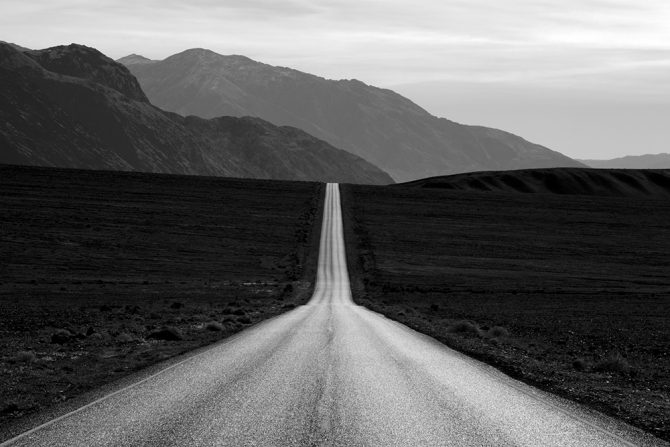
Nathan: I find your response very intriguing because it addresses, in a sense, the mystery of where creativity even comes from. It sounds like you advocate getting out of the way of such questions– and the whole concern of how to find it or cultivate it– and just doing it, just creating the work, the rest inevitably falling into place. I think many would wonder, however, if this can really only be done after you have managed to harness the basic understandings necessary for working with the mechanisms, the workings of the camera. In retrospect, do you think you arrived at your conclusions about what vision means as a result of much trial and error– and, perhaps, even pursuing recognition and acceptance and praise too early (only to find that it did not really justify and/or satisfy what you were really interested in ultimately doing with your work because it was, as you suggest above, blocking your creative impulses)?
Cole: I think you’re right. I don’t care as much about the “why” behind things. I just want to create. Talking about it and analyzing it is not my style, and, besides, I’m not certain that knowing those answers will make me a better artist. In my opinion, doing trumps analyzing.
There is no doubt that a certain technical proficiency is needed to be a photographic artist. Without those skills, we would be unable to transform our vision into an image. We could see the image in our own minds, but we would never translate it into something that others could see.
However, I think that the pendulum has swung too far and for too long in emphasizing the role of technical skills in photography. Yes … theyare important, even critically important, but couldn’t the same be said for vision? Is one really more important than the other and do the technical skills truly need to come first? I frequently hear people say that that you cannot really excel in the creative until you have developed a certain technical proficiency, but I believe that kind of thinking is backwards. As I look back on my photographic life, I now see that my emphasis on the technical was a substitute for working on the creative and that focus actually retarded my creative growth. If I could do it all over again, I’d focus on the creative right from the start and learn the technical only as my images required it.
The technical, in my opinion, is far easier to learn than the creative. I believe that’s one of the reasons we photographers focus so much on equipment and technical processes; we do it because we know how to do that. I think we are a bit uncertain how to find our vision, so we take refuge in what we can grasp: the technical. That’s what I did. Because I doubted my creative abilities, I compensated by becoming an expert technician. And that did carry me for a while, but, in the end, I was just another photographer creating technically perfect images that lacked soul. Neglected, my creative side atrophied and that further reinforced my belief that I had no creative abilities.
So bottom line, I’d encourage people to focus much more on the creative and much less on the technical. And I’d pursue the technical only in response to a creative need.
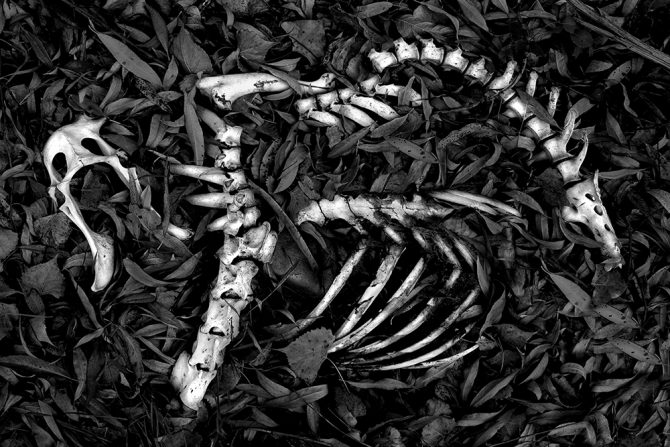
Nathan: I think one of the most talked about and, perhaps, most misunderstood question on the minds of many artists, including, of course, photographers, is: what exactly is fine art? Typically, many seem to respond that the answer is inextricably bound to the taste of the viewer, the goals of the creator, and inevitably, the opinion of the critic and the curator. Is fine art even something concrete, palatable– or even real– or is it more of a marketing tool or, perhaps, even a way for critics, sellers, and artists to label the work? I am curious about what your response to these questions might be– especially taking into consideration your understanding of vision.
Cole: I am not interested in defining “fine art,” and I don’t care how anyone else defines it either. What some expert, art critic, gallery owner, or curator calls fine art has no impact on me or what I do. They are merely one of a million opinions floating around in the ionosphere. When I look at an image, I simply know if I like it or if I don’t. Does anything else matter? Do I like an image less because someone tells me that it’s not fine art? (I’ve had that happen before).
For me, creating is doing what I want and not caring what others think. It is pursuing my own vision regardless of what others think. It’s about being so absorbed in the creative process that I’m not even aware of what others think! That moment when you realize that it’s irrelevant what others think is a wonderfully liberating feeling.
At the end of the day there is only you, your creations, and your opinion of your work. In the end, nothing else matters.
So why do some feel the need to define fine art? I’m sure one reason is simply to be able to classify work into categories so that we can communicate; for example, when I say that I create “fine art photography,” we all generally know what I’m talking about. So to some degree, we use these terms simply to be able to communicate, but I don’t spend much time worrying about a precise or universally accepted definition. I don’t have the time nor the patience.
Just so someone doesn’t think me a hypocrite, I do use the term “fine art” in my marketing. For example, I have targeted the Google search phrase “B&W Fine Art Photography” (search me, I’m number 1 out of 2,650,000 search results). So even though I have no use for defining “fine art,” I do recognize that it has a generally accepted meaning and that people use it to search for a certain type of image. I do use that to my advantage.
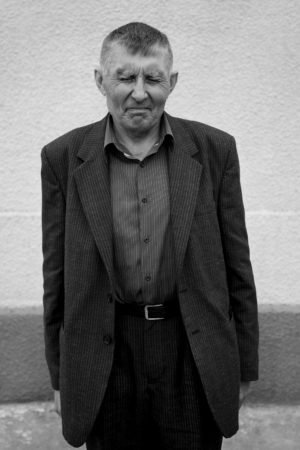
Nathan: Looking through your various projects, I see quite a few directions that you have followed— from “The Lone Man” series to the “Monoliths” series to “The Ghosts of Auschwitz-Birkenau” series and others— do you think there is any particular thread or overall theme that ties these together or are you moving from series to series individually?
Cole: There is no intentional connection between my portfolios and there is very little connection in terms of subject matter, but my work is all tied together by my vision, and that sometimes can produce a similar look between bodies of work– even though it is not intentional.
Many times over the years, people have advised me to pick one subject, focus on that and become known for that. However, that advice never sat right with me and I’ve always ignored it. I’ve been very fortunate to photograph a wide variety of subjects, and I’ve loved each project that I work on. I’d be bored if I was restricted to landscapes or any other individual subject! I believe that great work comes from passion, and pigeonholing yourself is not likely to produce much, if any, passion.
My roots are in traditional landscape photography, so you will see that influence in my portfolios. For example, my Death Valley portfolio, which appeared in the Sept/Oct 2012 issue ofLensWork, hearkens back to my roots much more than my other recent work. Then take a look at my “Ceiling Lamps” series and you’ll see a completely different subject and approach. Move onto my “Monoliths” portfolio and I’ve again changed subject, look, and style. Then there is my architectural series, “The Fountainhead,” and, well, you get the idea. My variety seems to fly in the face of the conventional wisdom to pick one subject and become known for that, but I don’t agree with that conventional wisdom.
People write to me all the time, almost sorrowful because their work is so varied. They seem to feel that this indicates a lack of concentration or discipline, which I don’t think is necessarily so. Following your vision doesn’t mean that your work focuses on the same subject or is similar looking. Vision should never be confused with a “look” or “style,” but, rather, it should be understood as an approach to creating images. While my portfolios have no common subject or theme, I do believe there is a common thread connecting them, and that thread is the way Isee and treat those subjects. I reject the concept that you must focus on one thing or develop a “look” to become successful; I would, instead, propose that the key to success is finding and following your vision.
Sometimes my work is not a “critical” success, but that is not how I measure success. I measure it by how I feel about the project and not by how others react to it. Take my portfolio “Ukrainians, With Eyes Shut,” a series of street portraits in which I asked the subjects to shut their eyes: this portfolio generated very little critical interest, but I love it, nonetheless. And, conversely, my series “The Ghosts of Auschwitz-Birkenau” was extremely well received, but that does not make me feel any differently about this body of work or make me go out and duplicate it (which people have advised me to do). There is this great quote that I’ve modified to sum up how I feel: what anyone else thinks about your work is none of your business.
I think my work is so varied because I don’t study other people’s work, so I’m very unaware what others are doing. This means I’m less likely to say “Why bother photographing Auschwitz? It’s been done to death and I could never do better than so-and-so, so why try?” This kind of ignorance is bliss because it allows me to photograph something without being intimidated or influenced by others work.

Nathan: I have to talk to you about your photography celibacy, your decision to avoid looking at what others do with their photography so that you are not indirectly influenced by it or discouraged from pursuing a theme or subject matter that interests you because someone else has done it. How far do you take this? I know, from previous interviews that you have given that you have great admiration for Michael Kenna and Alexy Titarenko (two of my most favorite photographers). Do you still check in from time to time to enjoy their latest work? I’ll have to confess and say that while I most certainly understand your reasoning behind this, I personally could not sacrifice the pleasure of witnessing the ongoing “conversation” and “evolution” that has been happening since the beginning of photography. In other words, for me, a significant part of my enjoyment of photography is the work of others. I can easily guess that your photography celibacy is often met with a challenge from other photographers. I’d love to hear more about your thoughts on this.
Cole: I learned photography by reading and by studying the work of the great masters. As a boy, I spent hours a day looking at images, analyzing them, and trying to decide what I loved about them and why. It was such a huge part of my life that it might seem that photographic celibacy would be a difficult thing for me to undertake.
So why take the “vow of celibacy?” Well, because at some point, I transitioned from photographer to artist and my desire to uniquely create became the most important thing in my life, even more important than enjoying great photography. It’s really not a sacrifice for me because I’m so focused on my creative process that I don’t miss it.
Do I peek at Kenna’s or Titarenko’s work from time to time? No. The only work I look at now is the occasional friend’s images.
Why do I continue this practice after almost five years? Let me illustrate: not long ago I saw an image of three telephone poles entitled “Three Crosses” by Brian Kosoff. The image just floored me and I purchased it. But something else occurred; I immediately found myself thinking “where can I find telephone poles like that?” I had to consciously stop myself and remind myself of my goal! Perhaps it’s just me, but when I see a great image my mind immediately starts thinking about how I can imitate the shot or recreate the look. So now I just avoid that altogether.
There are many like you, who understand why I do this but you choose a different path, and I respect that. And there are a few who argue adamantly against my practice because they generally feel that art builds upon that which has come before, and so to progress you must be aware of what has come before.
Another variation of that argument is that you must study great art to be able to create great art. However, I just don’t buy the argument. How can filling your mind with other’s images help you to be more creative or unique? It has the exact opposite effect on me! Original thinking is hard to do, and while I have not completely achieved that yet, I’m determined to try.
I think the best defense I’ve heard for Photographic Celibacy is that it’s a useful tool at a certain point in a person’s creative development. And once that tool has served its purpose, you move on and find another. Certainly I don’t argue that I’ll be celibate for the rest of my life, but for now I find the practice useful in helping me to see more uniquely so that I can further develop my vision.
There is something else that I have found equally important in developing my vision, and that’s learning to not care what others think of my work. To create for oneself and not for the praise of others can bring great power and conviction to your work. I’m not saying that I don’t enjoy exhibiting and being published. I really do, but that’s no longer the reason why I create. That’s now an extra benefit of creating.
Edward Weston has always been a role model for me in this area. Here is my favorite Weston story as told by Ansel Adams:
“After dinner, Albert (Bender) asked Edward to show his prints. They were the first work of such serious quality I had ever seen, but surprisingly I did not immediately understand or even like them; I thought them hard and mannered. Edward never gave the impression that he expected anyone to like his work. His prints were what they were. He gave no explanations; in creating them his obligation to the viewer was completed.”
It is very hard to put out of your mind what others will think of your work, but it really is quite liberating. Ironically I’ve also found that, in pleasing myself, my work has become more pleasing to others.
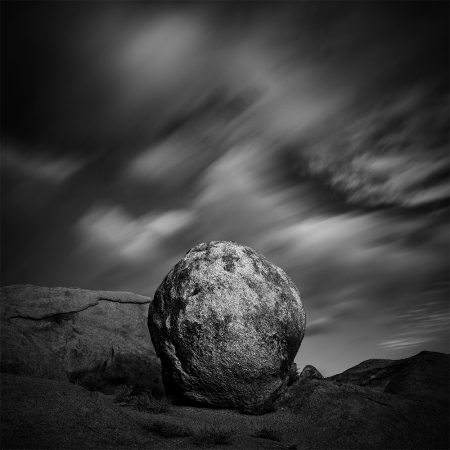
Nathan: Do you think it is necessary for an artist to always remain fresh, unique, and on the cutting edge (whatever that actually even means)? For example, some might say that choosing to paint in a similar style to (or be influenced by) the great Dutch Masters– or the wonderful Hudson River School painters of sublime landscapes– would not be following the mandate that art must always progress, always change, always seek to say something new. I strongly feel that, by definition of the very act of the individual creating something in his or her own voice, that someone who does work in a style of the past– or any similar subject matter already covered by others– is still creating something unique and fresh because, by definition, it cannot be the same as the work that inspired it (the work being inextricably bound to the vision of its creator).
Cole: I’ll be honest Nathan: I’ve never studied art, so I cannot speak intelligently or with any perspective other than my own. I work hard to not think of my work in relation to what others are doing. I do not compare it in order to judge whether it is new, fresh, or unique. I do not care if it is cutting edge in someone else’s opinion; that type of thinking is not productive and would drive me crazy. I am completely serious when I tell you that I could care less if the most renowned art critic declared my work good or bad; it makes no difference to me.
But I do care if my work is new compared to what I have been doing, and I do care if it’s unique compared to my past work, and I do care if I think the image is good. This is all that matters to me.
Now it’s very hard to be objective about one’s own work and to answer the question “is it good?” I generally find that I love 100% of my images when I view them in the field, and about 50% of them when I look at them on the computer, about 10% of them when I do my first-pass processing, and about 1% of them when I look at them a couple of days later and finally about .25% of them when I view them a few weeks later. I do find that time helps give me a more objective and realistic perspective of my work.
Nathan: So let’s shift gears a bit and focus on some of your particular series/portfolios. I’d love to hear a little more about the vision or, if applicable, thinking behind some of your series. Specifically, “The Lone Man,” “Monoliths,” “The Ghosts of Auschwitz-Birkenau,” “Dunes of Nude,” “Harbinger,” and “Ceiling Lamps.”
Cole: Each of my portfolios have come about spontaneously, suddenly, and without planning. When I see something, it excites me and I pursue it. How could life be any simpler or better than that? For a long time, I’ve kept a list of ideas, projects that I hope to pursue, but the truth is that I’ve never started a single one of them! I still keep the list, and I still think they’re good ideas, but I’ve never gotten excited enough to start one of them.
I typically complete my portfolios very quickly; many have been completed in days and weeks while some others have dragged on for a couple of years. This brings to mind a misconception that I had most of my life and one that I think others have: that a “serious” project will take years to complete. I always thought that the longer a project took, the better it must be. However, I no longer believe that. I don’t think there’s necessarily a correlation between how long a project takes and how good it is. For example, “The Ghosts of Auschwitz-Birkenau”portfolio was completed in less than two hours.
So how long, then, should a project take? It takes as long as it takes.
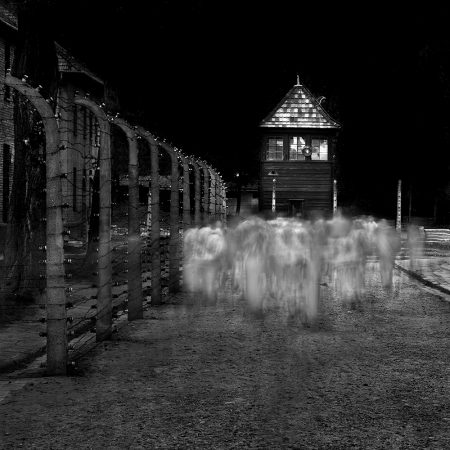
The Ghosts of Auschwitz-Birkenau: I was visiting my son, who was serving in the Peace Corps in Ukraine, and because I’m part Polish we decided to see Krakow. As we planned our activities, the family decided that they wanted to visit the concentration camps. I didn’t want to visit there because sad places make me sad, and while my wife loves a good cry, I tend to avoid discomfort! However the majority ruled and so off we went.
I had my equipment with me but decided not to photograph because I thought it might be sacrilegious. The tour started inside a building where we saw the documentation that was kept on each prisoner. We saw the infamous piles of shoes, glasses, hair and etc. We were about ten minutes into the tour when I started feeling claustrophobic and found it difficult to breathe. I signaled to the family that I was going outside to seek relief, and once outside I did feel a bit better. However, as I began to slowly walk, I looked down at my feet and began to wonder who had walked in these same footsteps before me, and what had been their fate? With each step I could not shake that question: who had walked here before me and now were dead? Then I wondered, perhaps metaphorically, if their spirits still walked here. And then the idea hit me; I must photograph the spirits of the dead who still walked the camps.
I had been working with long exposures for some time, so I was technically prepared. I had even used long exposures to create two recent images with people in them; “The Angel Gabriel” and “Two Kimonos,” so I understood a bit about creating ghosts. Armed with a little experience, an idea, and some inspiration, I started to work. I would use long exposures to photograph the other visitors at the camps and to turn them into ghosts. These unsuspecting tourists would stand in proxy for the spirits who had died there. Our tour bus was to leave in less than one hour and so I had to work quickly. I literally ran from shot to shot to complete these images.

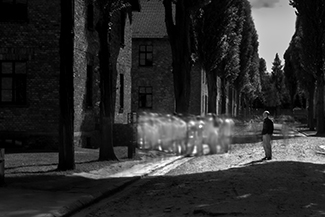
One of the largest challenges was surreptitiously photographing the other tourists. When they saw my camera and tripod pointed at a scene, they politely held back and didn’t enter the area, which, ironically, was exactly what I wanted! Fortunately, I had encountered this challenge before when I was photographing in Tokyo, so I had developed some simple techniques to trick people. I’d turn my back, act like I was on the phone and when they wandered back in I would use a remote shutter release to take the picture.
To create the ghosts, I used 10 to 30 second exposures, and I had to take about ten shots to get a single one that worked, which consumed precious minutes as I raced against the clock and the departing bus. In the end, the bus tried to leave, but my family protested and my wife dragged me back to the bus. In that short time at Auschwitz, I was able to create twelve images and then another three at Birkenau, our next stop. These were the fifteen most important images in my photographic life thus far, and if I never create any better than this, I’ll be happy with this accomplishment. Often the shot was ruined if someone stopped moving during my long exposure because this person would then be recorded as a mortal instead of a ghost. In only one of my images do I purposely leave a “mortal” in the scene, and it’s been interesting to watch people interpret what that means. I have my own interpretation, but I enjoy hearing what others think– and I’ve heard a number of very interesting interpretations.
View the complete “The Ghosts of Auschwitz-Birkenau” series here.

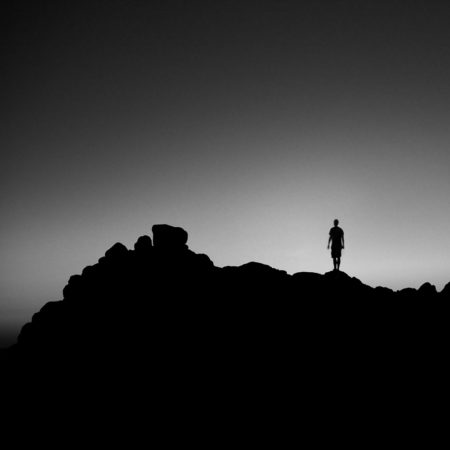
The Lone Man: I was shooting long exposures at one of my favorite dive spots inLaguna Beach when a group of tide poolers walked into my scene. While I was waiting for them to leave, I decided to take a test shot so that I would have my exposure all set when they left. I recorded a 30 second exposure and when I looked at the image, I was surprised to see that one man had been perfectly recorded because he had stood perfectly still for the 30 seconds. As I looked at him, I noticed something very familiar about his stance; I had seen this attitude before. I realized that what I was seeing was the look that comes over people as they stand on the “edge of the world” and look out into the infinite expanse of ocean. They become still, contemplative, pensive, and thoughtful. And now that I had consciously noticed this, I began to see it in people everywhere which inspired me to create “The Lone Man” series. Here is my artist statement for the project:
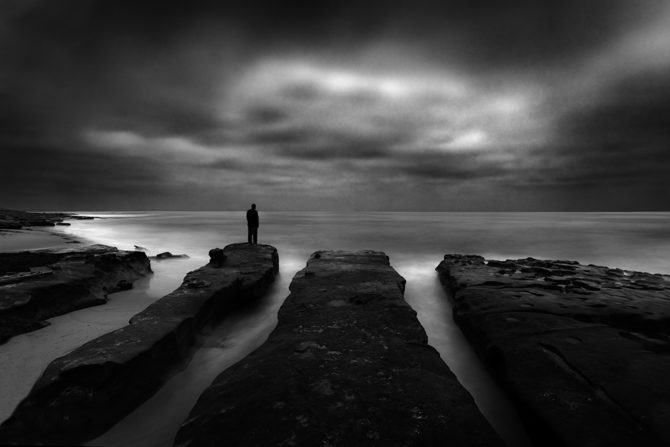
Something unusual happens when a person stands on the edge of the world and stares outward. They become very still and you can almost see their thoughts as they ponder things much greater than self:
Where did I come from?
What is my purpose?
What does it all mean?
What is beyond the beyond?
Do I make a difference?
Is there more?
At that moment they are The Lone Man, alone with their questions and thoughts about life, the universe and beyond. People are affected by this time of meditation and often vow to make changes in their lives. But this moment is short lived as these weighty thoughts are replaced with more immediate concerns:
Should I eat at McDonalds or Burger King and should I try that new green milkshake?
View the complete “The Lone Man” series here.
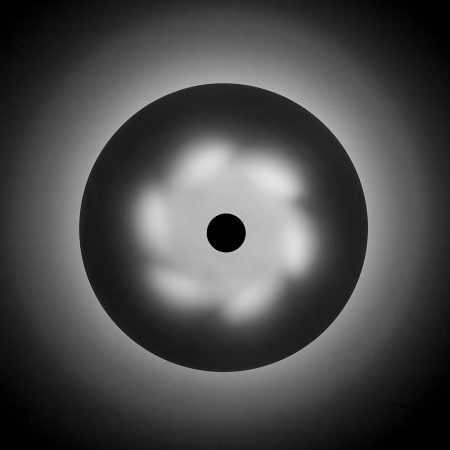
Ceiling Lamps: I was standing in a hotel lobby in Akron, Ohio, waiting to check out, when I happened to look up. What I saw was a ceiling lamp that looked fantastic when viewed from directly below. It really didn’t look like a ceiling lamp to me at all!
I pushed all the lobby furniture out of the way and lay on my back to get a better perspective (which triggered offers of CPR, mouth-to-mouth, and calls to 911). This is the first ceiling lamp I created and from there it was all great fun to seek out these lamps and photograph them– all from the same perspective and style.
This was a fun, whimsical project, and I had a great time creating it. Once you become attuned to something, you begin to see it everywhere, and that’s what happened to me with this project. Someone once told me that I’d probably never win any critical acclaim for this project, and that’s okay. That’s not why I created it.

View the complete “Ceiling Lamps” series here.

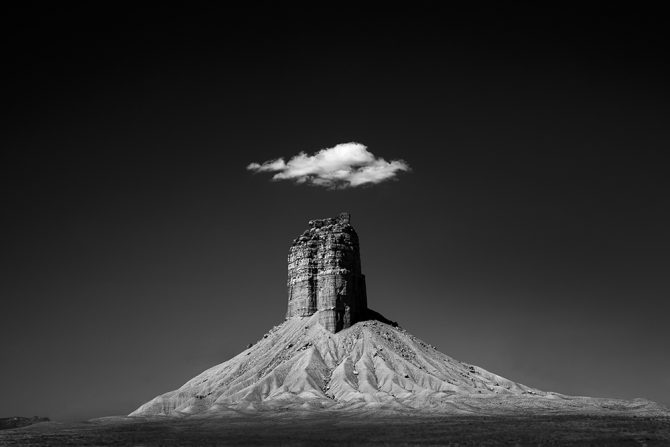
Harbinger: “Harbinger” was a single spontaneous image that I never thought would lead to a portfolio. I was photographing some mud hills in Utah,where it was over 100 degrees and my teenage son was doing the “are you almost done?” routine (if you have children, you understand). A parent can only take so much of that, so I finished up, and, as we were heading back to the car, I saw this solitary cloud moving rapidly across the sky. In an instant, I could tell by its trajectory that this cloud was going to pass over those beautifully symmetrical mud hills that I had been photographing and I wanted that image! I ran back up the hill, set up my camera and tripod in mere seconds … and got off this one shot.
I named it “Harbinger” because it seemed to me that this one little cloud was a harbinger of things to come. I absolutely loved the image but instantly wrote it off as a “one hit wonder,” not because I didn’t think it was a good image, but because I thought the chances of finding another similar cloud and interesting scene were about zero. Surprisingly, I have found a few more, and I continue to work on this project as the opportunity arises. Now this is a project that will take me years and perhaps my lifetime to complete!
Recently, I added a new Harbinger image that has more than one cloud, but I feel it still fits the description of a Harbinger [note: it is the middle image below].
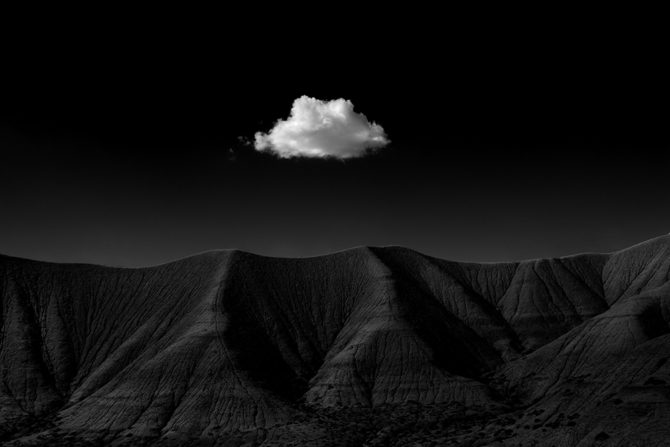
 View the complete “Harbinger” series here.
View the complete “Harbinger” series here.
Monoliths: When I first saw the Monoliths on the Bandon, Oregon beaches, I knew that I would photograph them. I have always been fascinated with what I call “Monoliths.” First, as a boy I read “Aku Aku” by Thor Heyerdahl and learned about the giant stone statues of Easter Island, and, later, I saw 2001 A Space Odyssey and was fascinated by the monolith discovered on the moon. I don’t know why Monoliths fascinated me so much, but I have always thought of them as conscious beings who have always existed. I imagined them standing there motionless for eons, observing man as he scurried about full of self importance. That always made me smile.
Each September I return to Bandon to photograph, it’s my favorite stretch along the Oregon Coast. And each year I question whether I should return because it seems as though I’ve photographed the Monoliths in every conceivable light, from every angle and in every type of weather. But I do return and I do always find new images.
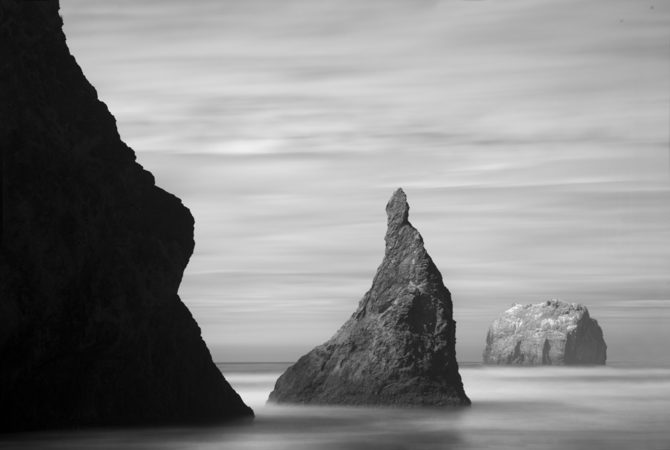
View the complete “Monoliths” series here.
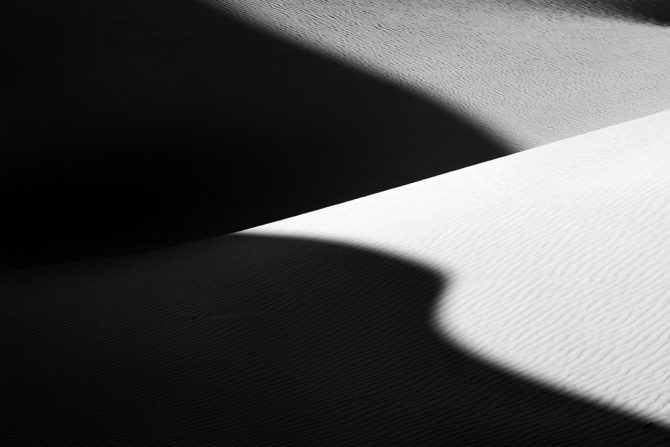
Dunes of Nude: During my trips to Bandon, I always drive down the coast to this great wind surfing spot. It has this very narrow strip of sand dunes that are compressed against the highway, and because of the very small space, it creates this miniature sand dune system. It looks just like a regular dune system except that it’s in 1/4 scale with everything miniature and compacted. This spot has always attracted me, but I never really came away with images that I liked.
However, on my last trip there, as the sun set, something really spectacular occurred. The low sun transformed the dunes into something completely different and during every minute of that last low sun, the shadows and shapes of the dunes changed. You have to work furiously because the sun is so fleeting. I became enthralled with this last 20 minutes of sunlight and this work has developed into a new project entitled “The Dunes of Nude.”
Initially I portrayed the dunes with very light tones, an unusual choice for me, but one that I thought I’d try. But after living with the images for a while, I reworked them all to be dark and “contrasty.” Sand dunes have been photographed by thousands of people and in a thousand different ways, and so part of me says that I’m unlikely to portray them uniquely. But another part of me considers that a challenge and that makes it all great fun.
The Dunes of Nude is a work in progress.
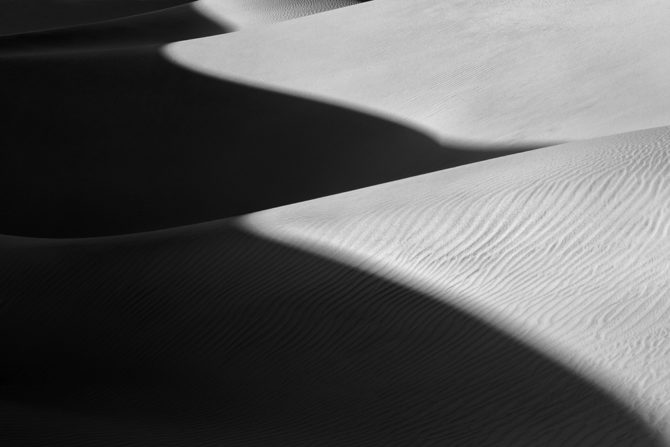

View the complete “Dunes of Nudes” series here.
Nathan: I’d like to shift gears again. One of the many parts of your talk in Palo Alto that I enjoyed the most, was your various pieces of advice, your useful chunks of wisdom, to photographers. I especially loved your advice to photographers to keep it simple, both with the purchase of the latest and greatest equipment and with processing images. I’d love to hear more about your thoughts on these matters.
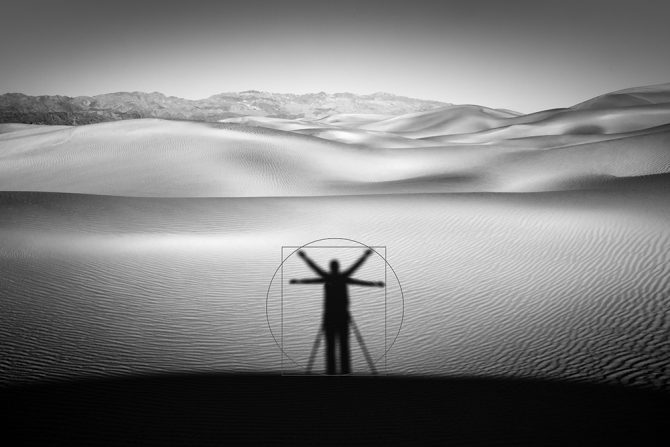
Cole: I am a recovering technophile. I’ve always loved gadgets and always needed to have the latest equipment before anyone else did. My home was gadget central, and I thought that being able to own all of this equipment somehow qualified me. However, all of this equipment and these programs required a lot of time to learn and to maintain, so much so that I had less time for actual photography. It also led to the twisted belief that a great image was dependent upon my equipment. When I saw a photograph that I admired, I would ask the photographer about the camera, the lens and settings. What was I thinking? That if I knew their settings I could create the image myself?
This attitude continued until I started discovering my vision, and, as a part of that journey, I made the commitment to stop focusing on the things that didn’t matter and to focus, instead, on the things that do. I started focusing on my vision, composition and the image. I reduced my equipment and processes to the minimum “needed” to do the job. The first benefit of this new thinking was simply that I had a simpler workflow with fewer things to go wrong.
Then something else started to happen, this philosophy of simplification started affecting my work. I noticed that I was focusing more on simple images, simple shapes, and simple concepts. Over time, I found my vision, and my work became simpler in its construction and it improved.
I am not against technology or equipment or processes; in fact, I’ll adopt any tool or process that is needed to fulfill my vision. But all of those “things” are merely tools that are servants to my vision. They are not the masters.
Nathan: What equipment (camera, lenses, and filters) and software do you use?
Cole: I use the following:
- Canon full frame cameras with a 16-35, 24-105 and 100-400 lens.
- Tripod and remote shutter release.
- A polarizer, a Singh-Ray Vari-ND filter and an assortment of fixed ND filters.
- A HoodLoupe by HoodMan
- Photoshop and typically six tools [note: see Cole’s answer to the question below for what those six tools are].
- Wacom Tablet
- Epson 7900 printer using the supplied Advanced Black and White mode
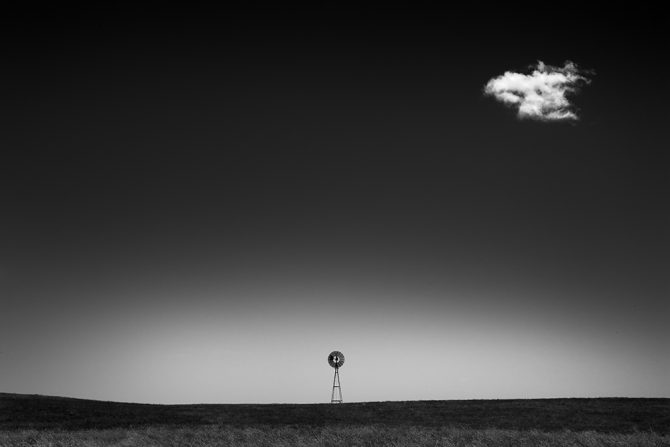
Nathan: I’d love to hear about your basic (or not so basic) approach to processing. Do you know, when in the field, how you are going to later process an image or is this discovered during the actual processing (or, perhaps, a little of both)?
Cole: My belief is that the image begins with your vision. Most of the time I know exactly how I want the final image to look and I can “see it” in my mind’s eye. I’ve become comfortable enough with my Photoshop capabilities to know that if I visualize it, I can usually make it happen. And if I don’t have the skills to make it happen, then I’ll research and learn until I have found a way to translate that vision into my image.
You do not need a lot of Photoshop knowledge to be able to create with vision; in fact, I know very little about Photoshop, but I know enough. I typically use only six tools inPhotoshop because I’ve found that I don’t need more than that. I believe that many of the “extras” that people use just add another layer of cost and complexity to the process with very little improvement in the image.
Here’s an overview of the six tools that I use:
- RAW Converter – I use Photoshop’s RAW converter to set my image to a 16 bit, 360 ppi, 10X15 TIFF file.
- B&W Conversion tool – I like Photoshop’s b&w conversion tool and play with each color channel to see how it affects the different parts of my image.
- Levels – One of the most basic secrets to a great b&w image is to have a good black and white. I use Levels to set the initial black and white point and I use the histogram to judge this, never my eyes. Throughout my processing I keep my eye on that histogram to maintain a true black and white. Something else I do while in Levels is to adjust the midtones, which can radically change the look of my image and tends to set the direction I will take it.
- Dodging and Burning – This is where I do most of my processing and where I have the most fun! I feel most at home with dodging and burning because that’s how I did things in the darkroom. However the primary difference today is that I can take my time and exercise minute control over every part of the image. I use a Wacom tablet to dodge and burn because you CANNOT do a good job with a mouse.
- Contrast Adjustment – After I have the image looking great on screen, experience teaches me that it will print flat, and so I add some contrast. A monitor uses transmitted light and a print uses reflective light, so that means it will take a lot more work to get your print to look as snappy as it does on the monitor. Contrast helps.
- Clone Tool – I use the clone tool to spot my images. Cloning is so much better than in the old days when you had to spot every single print and your mouth tasted like Spottone all day!
I also like to mention what I don’t use: I do not use any plug-ins or b&w conversion programs. I do not use a monitor calibrator. I do not use curves or layers. I do not use special RIP’s or printer drivers. I do not use special inks and I am not on a lifelong search for “the perfect paper” (life is too short). I find that most of these “extras” only add a very small amount to the image, and that generally when an image misses the mark, none of those things would have made a difference anyway.
What would benefit most people’s work is to focus on vision, work on their composition skills and then hone the technical skills that are needed.

Nathan: I also love your advice about how one should not take advice and criticism from other photographers about how you should have or should not have made a particular choice when composing or processing an image.
Cole: People who give advice are generally well intentioned and oft times experienced. However their advice comes from their vision and their point of view, not yours which makes all the difference in the world. If I were to tell you how to process your images and you listened to my advice, then your images would begin to look like mine. That’s not right, they should look like your images that were created with your vision. Consequently I try very hard to not give advice to others about their images, how they should process them or how they should look.
Nor should you listen to the critics; art critics, professionals or others on photo sharing websites. Listen only to yourself and ignore the world. I remember the first image that I had created with my own vision, The Angel Gabriel. I showed it to my mentor at the time and she immediately said “Never center the image!” Something about her advice felt wrong, I had purposely centered it because that is how I had envisioned the image and how it felt. But, she was the expert and so I tried cropping it off center.
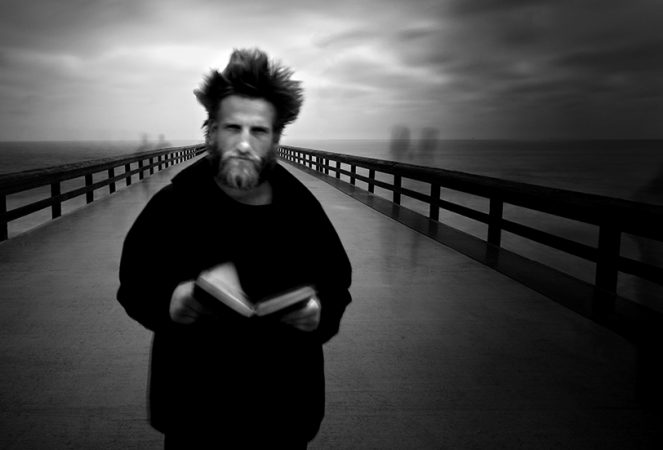
Seeing this image almost made me sick, this is not how I saw it through my Vision. This taught me to always follow my Vision, and to not to follow others advice (no matter how well-intentioned).
There is a saying that I try to live by: what others think of your images is none of your business. This requires a confidence in your vision and in your work, and when you have that confidence you’ll not need other’s advice.
One of my favorite books is The Fountainhead which is the story of Howard Roarke, an architect full of vision and self confidence. His friend Peter is a fellow architect who is insecure about his work and is constantly asking others what they think of it. At one point Peter comes to the Howard to ask his opinion about a building he has designed, here is Howard’s response:
“If you want my advice, Peter,” he said at last, “ you’ve made a mistake already. By asking me, by asking anyone. Never ask people, not about your work. Don’t you know what you want? How can you stand it, not to know?”
Now this vision and confidence does not come overnight, but it is my goal and I am constantly striving to reach that level of independence.
Nathan: Do you have any general advice for aspiring photographers?
Cole: My advice will be pretty predictable:
- Don’t listen to other’s advice (anyone see the irony here?)
- Define success for yourself before you go seeking it.
- Focus on your vision and do not imitate others.
- Understand the role of equipment and processes, they are subservient to vision and the simplest tools can produce incredible images!
- Be honest and sincere, these qualities have much more to do with being a good artist than most people understand.
Nathan: Are there any artistic influences outside of photography that have inspired your work– for example, painters, poets, writers, films, music, etc?
Cole: Yes, several.
- The Poem Invictus – My success is not dependent upon others; “I am the master of my fate: I am the captain of my soul.”
- The music of The Beatles – it reminds me to not to keep producing the same type of work simply because it was successful, in an attempt to remain successful. Experiment, grow, change, and shake it up!
- The novel The Fountainhead – It taught me to not care what others think, to follow my own vision, to define success for myself, to be independent.
- Edward Weston – I learned from Weston to not care what others think of my work, in creating the images my obligation to the viewer is complete.
- God – I believe we all have been given unique talents and that we should develop them. I have always believed that I was destined to be a photographer and artist.
Nathan: Do you listen to music when you process your photos? If yes, what do you listen to. And does music play a significant role in your creative process?
Cole: Yes I do listen to music while I work, I have splurged and installed a nice system in my office. As we write this I’m listening to the Alan Parsons Project. My library consists of 60?s and 70?s music, Jazz, Classical and Latin.
I’m not sure if listening to music while I process my work helps or not, but I do enjoy it!
Nathan:Any last thoughts or anything you would like to add?
Cole: I know that not everyone will agree with all of my ideas. Despite how I might come across, I am not advocating that this is the “right way” or that my approach is right for everyone. This is simply what I have learned and what I now believe. So I hope that nothing I’ve said has offended someone who believes or practices differently.
Who knows, in a few years I may look back to what I’ve said here and think “what a load of horse crap!”
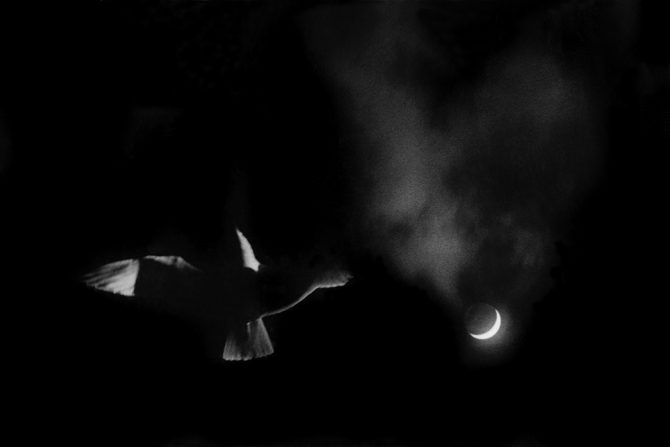
Nathan: Now that we have talked about your vision, process and other thoughts about photography, I’d like to end with the beginning and the future: when did you first become involved with photography? What first inspired you? And do you have any specific direction you would like to take your work in the coming years? I’ll also take this moment to thank you for doing this, Cole. It’s been a pleasure to read your responses. I look forward to seeing where you take your work in the days, months and years to come.
Cole: You’ve always been so kind and supportive of me, Nathan, thank you. I enjoyed meeting you last year in Palo Alto. In this Internet age I’ll often “know” someone for years before I ever meet them! And thank you for asking me to talk with you about these things, I always enjoy expressing my thoughts because this process helps me refine my beliefs.
I discovered photography at age 14 and immediately knew that I was destined to be a photographer. I was out hiking with a friend in Rochester, NY when we came across an old ruin. My friend told me that the home had once been owned by George Eastman, the father of Kodak and in many ways the father of modern photography. This piqued my interest and so I checked out Eastman’s biography from the school library. I was fascinated by the story of photography and before I had finished the book, before I had taken a picture or watched a print come up in the darkroom, I knew that I would be a photographer. I felt destined.
I know that sounds silly and perhaps presumptuous, but it is honestly how I felt and have continued to feel throughout my life. This feeling of destiny started a 10 year intensive journey of personal study and self-education. I am self taught, I’ve never taken a photography class or workshop in my life. I literally spent every waking moment either reading and learning technical processes, working in the darkroom or studying the images of the great masters of photography. I was drawn to the work of Ansel Adams, Edward Weston, Paul Strand, Wynn Bullock, Paul Caponigro, Minor White, Imogen Cunningham and others. I noticed that I was drawn to a particular type of image, dark images and contrasty images. When I’d see an image that struck me, I’d get this chill that would run down my spine. I wanted so badly to be able to create images like that and I worked hard to learn to do that.
Over the years my goals have changed and will probably continue to develop. Instead of wanting to be a photographer, I wanted to become an artist who used photography. Instead of documenting, I wanted to create. Instead of copying others, I wanted to find my own vision. Instead of being famous, I wanted to please myself.
What direction do I want to go in the future? I want to continue to try and see uniquely, to find joy in creating, and to combine my desire to see the world with my desire to create art
In so many ways I feel I am the luckiest person in the world.
Explore More of Cole’s Photography: website | blog | newsletter | emai
All images on this page– unless otherwise noted– are protected by copyright and may not be used for any purpose without Cole Thompson‘s permission.
The text of this interview is also protected by copyright and may not be used without the permission of Nathan Wirth or Cole Thompson.
December 20, 2012
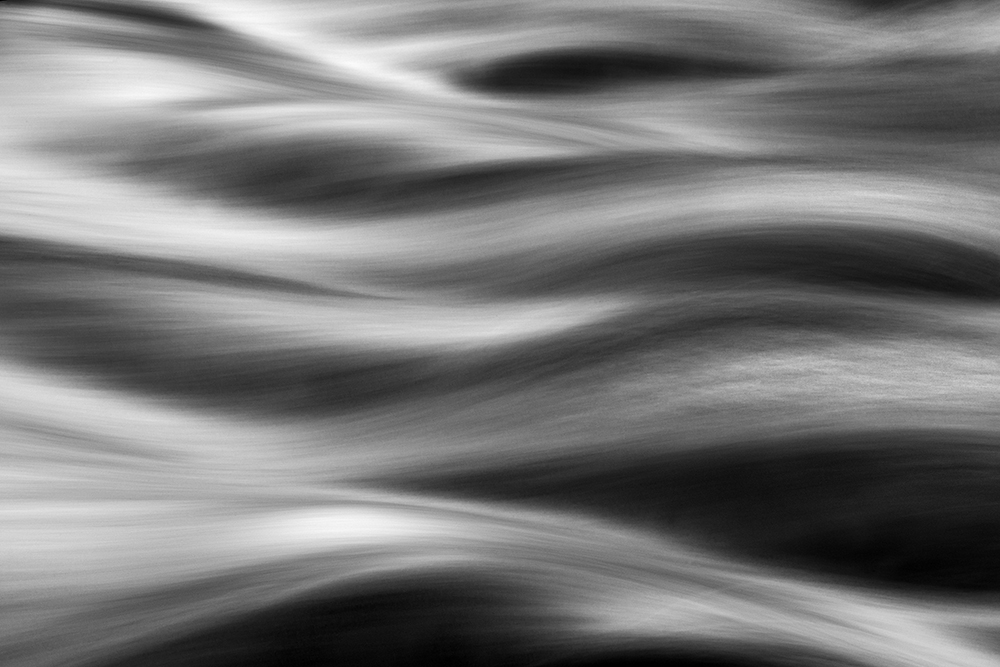
December 18th 2012 by Andrew S Gibson
This article is part of a series of interviews with long exposure photographers to celebrate the release of my ebook Slow. You can keep track of the interviews by clicking on the Long Exposure Photography Interviews link under Categories in the right-hand sidebar.
Cole Thompson is a fine art photographer based in Colorado in the United States. As part of the interview I asked him how, in a world where it seems that many photographers are producing similar work, it is possible to create original photography? His answer is worth reading, as it brings up one of Cole’s most interesting concepts, ‘photographic celibacy’.
Interview
How would you describe your photographic vision? What kind of look do you try and create in your photos?
I cannot describe my vision because I believe vision is intangible and indescribable. I view vision as the sum total of my life experiences. It is what makes me see the world a bit differently than another, because my experiences have been different.
I do not try to create a look or pursue a certain style in my images, I simply follow my vision. If you pursue a look, style or technique without vision, then those things are mere gimmicks and your images will lack power and conviction. I have been creating images since 1968 and so my skills would allow me to pursue many different styles or looks, but I’m only interested following my vision.
What I’ve learned is that vision must always come first and then techniques and style must flow from it. I’ve also learned that I must only create images that I love, that’s where my passion is and where my best work will come from.
Name three photographers you like and why.
Edward Weston is my photographic hero, not because of his images (although I do love them) but because of his attitudes. In my opinion Weston was a true artist and not a photographer (I draw a distinction between the two). He was independent in thought and did not care what others thought of his work. He created for himself and he had no obligation to explain his work to others.
One of my favourite stories is told by Ansel Adams on his first meeting Weston:
“After dinner, Albert (Bender) asked Edward to show his prints. They were the first work of such serious quality I had ever seen, but surprisingly I did not immediately understand or even like them; I thought them hard and mannered. Edward never gave the impression that he expected anyone to like his work. His prints were what they were. He gave no explanations; in creating them his obligation to the viewer was completed.”
In so many ways Weston has been my mentor. I re-read his Day Books every year and often read them just before I go out to create new images. His independence and obligation to self has inspired me.
Wynn Bullock. As a 14 year old boy I taught myself photography and part of what I did was to sit for hours looking at the work of photographers. Wynn Bullock was one whose work I admired and it wasn’t until years later I realised how much he and I saw alike, with both of us gravitating towards dark and contrasty images.
Ansel Adams. For many years I dreamed of being the next Ansel Adams (like millions of other young photographers). And for years I tried to imitate his look and even specific images. But then something happened to me that changed my attitude and led me on my quest to find my own vision. I was at a portfolio review and a gallery owner quickly looked at my work, brusquely pushed it back towards me and said “It looks like you’re trying to copy Ansel Adams.” I proudly told him that I was because I loved his work! He then said something that really made me mad at the time, but later opened my eyes, he said:
“Ansel has already done Ansel and you’re not going to do him better. What can you create that demonstrates your vision?”
That was the beginning of the search for my vision. I still love Ansel Adam’s work, but I no longer want to be known as the “best Ansel Adams imitator in the world.” In fact, now if someone says to me “your work reminds me of Ansel Adams” I know that I have failed to distinguish myself with my own vision.

Long exposure photography – what’s the attraction and why do you do it?
The long exposure is not something I set out to pursue nor is it a marketing strategy I chose to become known as “the guy who uses long exposures.” But rather it’s the outcome from following my vision: it’s what I love, it’s how I feel and it’s how I see the world.
About 90% of my recent work was created using long exposures. I initially started off with water, then moved to clouds and now have been creating images of people with it as well. I suspect I’ll find other areas in which to use it as well.
Why black and white – what is the appeal for you?
That is a very difficult question to answer and perhaps my artist statement says it best:
I am often asked, “Why black and white?”
I think it’s because I grew up in a black-and-white world.
Television, movies and the news were all in black and white.
My childhood heroes were in black and white and even the nation was segregated into black and white.
Perhaps my images are an extension of the world in which I grew up.
I really don’t worry too much about the “why” behind things, I simply accept them as they are. I love black and white and always have. I’ve tried dabbling in colour and I’ve seen a few colour images that I’m drawn to, but in the end I really am just a black and white guy and I’m okay with that.
I can see from your portfolio that you are widely travelled, especially within the United States. How important is the contribution of travel to developing your portfolio from an artistic point of view? How has travel helped you develop as a person?
Travel is not critical for me in terms of subject matter, I can create similar images anywhere. But in terms of concentration and freeing my mind of my daily responsibilities, it is very important to get away. I have a full time job, a large family and many professional responsibilities, and I find that it’s difficult for me to concentrate when I’m on my home turf. However when I get away I’m able to leave all those things behind me. The best thing about being away is that I’m able to focus on just one thing: creating.
So travel has become very important for me. Many of these trips are to visit my children who have been stationed around the world. We visited my Marine Corp son who was stationed in Japan, my Peace Corp son in Ukraine and Poland and next year I’ll visit a son in Russia and Croatia. I am very fortunate to have family in these places because I probably wouldn’t have been brave enough to venture there without them. However next year will be a first for me as I visit Iceland by myself.
I do also travel within the United States. I go to Death Valley every January, the Oregon coast every September and I’m looking to add a third location, probably Hawaii. I like going back to the same spot each year because I can continue working on an idea, but once I’ve lost interest in that idea, I find a new location.

There are so many photographers working with long exposure photography techniques in black and white that sometimes it is hard to be original. Yet your work is very original. Can you give our readers any tips for finding an original approach to long exposure photography?
One of the side effects of the internet is that everyone quickly knows what everyone else is doing. When someone creates a new look, it seems as if overnight everyone is copying that look. I did that for many years, imitate others look, until I realised that I wanted to be more than an imitator or copycat. I want to create my own unique work and that is what I focus on, ignoring what others are doing.
I have a friend who thinks the key to success is to photograph something that nobody else has photographed before. He once told me that he had discovered something unique: frozen chickens. He said that he would always have a frozen chicken in his images (to this day I’m not certain if he was kidding or not!). In my opinion success is not about finding a subject that’s not been photographed before (I doubt there are many such things) but rather creating something unique, from your own vision.
I never focus what others are doing, I simply go down my own path. I am unaware what others are creating because I practice something that I call Photographic Celibacy. It’s the practice of not looking at or studying the work of other photographers. I do this to reduce the number of images floating about in my head and to reduce their influence on my own work. I find that when I see a great image, my first thought is “how can I do that?” Then I catch myself and remember that I do not want to imitate, but create. I’ve practicing Photographic Celibacy for five years now and it has been very helpful, but I still have some iconic images floating around in my head and when I go to the grocery store I have to admit that I still look at the bell peppers! But I’m doing better at not imitating others.
Most people who hear about this practice think I’m crazy, they believe that imitation is how we build our skills and grow creatively. I disagree, I believe imitation is harmful because it retards the development of our own vision.

Can you tell us a little about The Lone Man series? What inspired it? What are you trying to express with these images?
Like most of my series, the Lone Man was an idea that I just stumbled upon and spontaneously created. Whenever I get an idea for a new project, I write it down on a long list. However the truth is that I’ve never once used one of those ideas, all of the ideas for my portfolios have been spontaneous and just took off like a wildfire.
That’s what happened with the Lone Man series. I was in North Laguna at one of my favourite dive spots, creating long exposures of the water. It was a pretty crowded day at the beach and so people were out on the rocks looking for creatures in the tide pools. A group of people were in my shot and I was impatiently waiting for them to leave. While waiting I decided to do a test exposure so that I’d be all ready as soon as they left. After the 30 second test exposure, I noticed that one of the people had stood still for the entire 30 seconds and I recognised his body language. It was pensive, thoughtful and you could tell the man was thinking about things larger than himself.
Soon I started noticing this effect in a lot of people, they would come to the edge of the world and just stare off into the distance. I began photographing these people and the Lone Man series was born. Here is the artist statement for this series:
Something unusual happens when a person stands on the edge of the world and stares outward. They become very still and you can almost see their thoughts as they ponder things much greater than themselves:
Where did I come from?
What is my purpose?
What does it all mean?
What is beyond, the beyond?
Do I make a difference?
Is there more?
At that moment they are The Lone Man, alone with their questions and thoughts about life, the universe and beyond. People are affected by this time of meditation and they often vow to make changes in their lives. But this moment is short lived as these weighty thoughts are replaced with more immediate concerns:
Should I eat at McDonalds or Burger King and should I try that new green milkshake?

Normally I do not comment on what my images mean, sometimes because they are just beautiful images and don’t have any deeper meaning, and often because I think it’s the viewer’s job to decide what they mean. But in the case of The Lone Man, I have revealed a bit of what I’m thinking about in my artist statement. When I was creating these images I was impressed at how standing at the edge of the world causes people to ponder their smallness and their purpose in life.
So many people have asked me “how did you get those people to stand still for 30 seconds” and “did you ask them to stand still?” I didn’t have to ask people to stand still because this is just what people do! You could see them deep in thought as they stood there, often for several minutes, and pondering the “bigger questions” of life.
The last part of my artist statement is a little dig, at how little time we spend thinking about those bigger issues and how easily we are brought back to our own petty concerns; my burger wasn’t cooked right, I don’t get a good cell signal at my house, the guy in front of me is driving so slow etc. So much of what we concern ourselves with is so unimportant in the larger scheme of things.

Another series I like is Monoliths. What draws you to photographing seascapes? What’s the appeal of the giant rocks that appear in these photos?
I grew up in Southern California and spend my youth at the Huntington Beach pier, bodysurfing at lifeguard tower number 1. I spent countless hours diving Laguna, La Jolla and Catalina. The ocean was a large part of my life until I moved to Colorado in 1993. Truthfully the ocean is the only thing I miss about California and whenever I visit, I am drawn back to it.
Photographing the movement of the ocean with long exposure is just a part of my vision, it’s how I see the ocean. To photograph it with a static image, seems to me a sin!
I have always had a “thing” about Monoliths, first when I was a young boy and read Thor Heyerdahl’s “Aku-Aku, the Secret of Easter Island.” Those stone giants really captured my imagination and I wondered who created them, how and why?

Next I was fascinated with the Monolith in “2001: A Space Odyssey.” And so when I first saw the beaches of Bandon, Oregon with their statuesque “monoliths” (sea stacks to the locals) all of my past fascinations flooded back and I knew that I would photograph them. I am certain they have been photographed a million times before, but since I don’t look at others work, I am ignorant of how others have portrayed them. Even if I were to find out that I had unknowingly created images similar to others, it would not concern me, as my images are honest creations borne from my vision.

Perhaps related is your series Ancient Stones. What is the story behind these photos? What is significant about these stones, and where did you get the idea of photographing them?
The Ancient Stones series is related to the Monoliths in sense. I was wandering about in Joshua Tree, waiting for inspiration to hit me, and nothing was happening. In response to those “dry spells” I’ll usually find a nice spot to sit for a while, clearing my mind of clutter and trying to see more clearly. As I sat there looking at those large rocks, I had some thoughts that were similar to what I was thinking when looking at the monoliths in Bandon. How long have these rocks been here, millions of years? How many men have they seen scurrying about, going here and there, building this and that, full of self importance? I wonder if “they” find all of this amusing?
That made me want to photograph “them” in a way that showed their permanence and timelessness. I hoped the long exposure helped do that, contrasting the still stones against the movement in the sky. I’ve only just started this project and so I’m not sure where it will go from here.

I believe you earn a living, or at least a part-time living, as a fine art photographer. Do you have any advice for our readers on how they can work towards achieving the same goal? What can they do from an artistic viewpoint to improve their work and a practical viewpoint to selling their work?
I have a full time job and do not earn my living from my art. Many years ago I purposely chose not to pursue photography for my living because I feared it would take the fun out of it, and I’ve never regretted that decision. I create only for the pure love of it and am proud to be an “amateur” in the truest sense: I am self taught, I create for myself and I do not earn my living from my work.
What I dislike about earning a living from your art is that it invariably involves compromises and I never want to create for others. I want to create whatever and however I want, not caring if a single person likes my work. Ironically it is that independence that brings out your best work and may bring about success. I once posted on my blog that the fastest way to earn money from your photography is to sell your equipment. There is truth in that!
Links
Cole Thompson’s website
Cole Thompson’s blog
You can contact Cole by email at Cole@ColeThompsonPhotography.com
Photo Gallery
Here are some more of Cole’s long exposure photos:








April 19, 2012
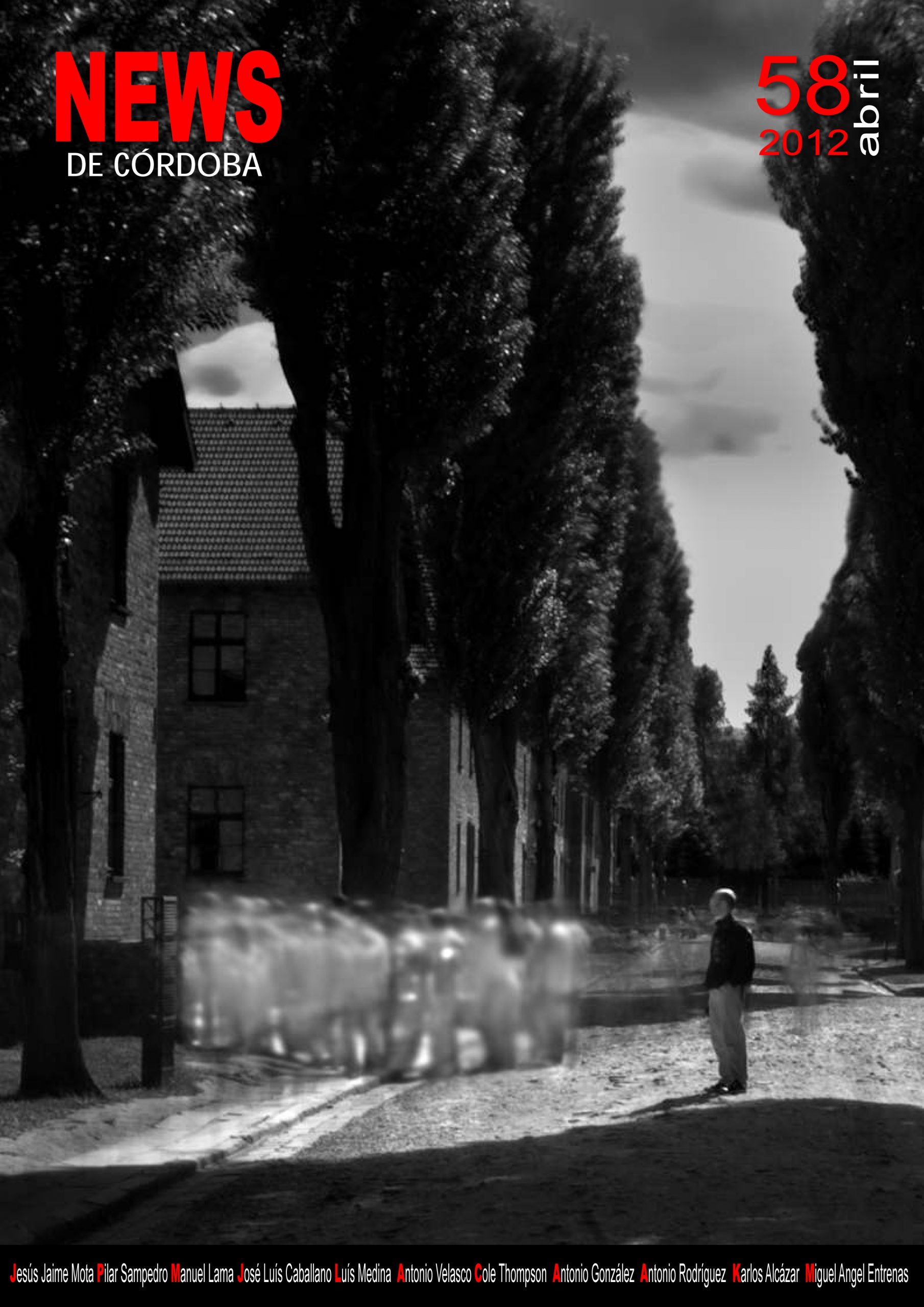
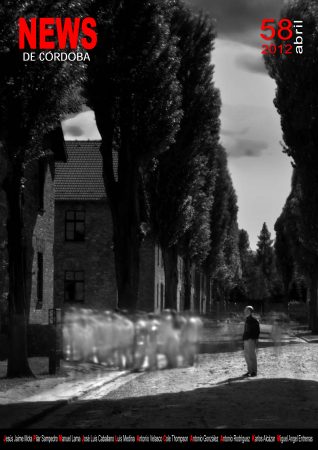
The April edition of NEWS de Cordoba features all sixteen images from The Ghosts of Auschwitz-Birkenau portfolio. This is the official publication for the Photographic Association of Cordoba, Spain. I was greatly honored that they chose my image for the cover.
Also, I recently completed an interview for 121 Clicks which I really enjoyed because I was asked questions that I’m not normally asked.
Interview With Fine Art
Photographer Cole Thompson
An Introduction about you
I grew up moving around the United States, my father was in the Air Force and so we never stayed in one place for very long. We finally settled in Southern California and this is where I call home, it was a good life growing up on the beach.
I married and started a family in California, but in 1993 we moved to Northern Colorado and we now live on a small ranch.
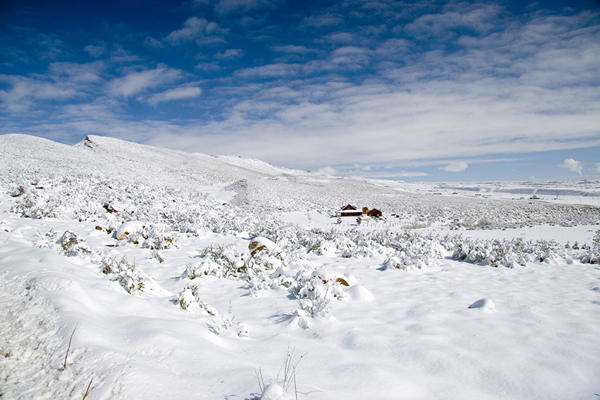
I have a full time job (which is a surprise to most people) where I have worked in private education for the last 31 years. I have five children, three daughter-in-laws and one grandchild. I am 57 years old.
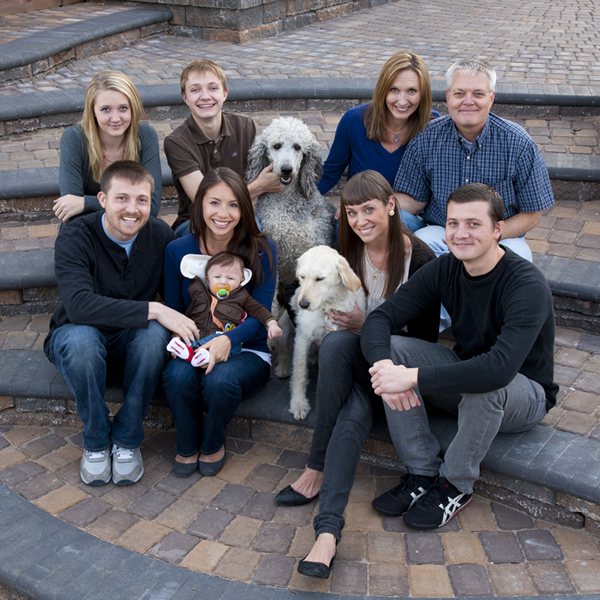
The loves of my life are: my family, photography, architecture and scuba diving. My life is pretty average and unremarkable.
How did you get into photography?
I was living in Rochester, NY (the home of Kodak) as a 14 year old boy. I was out hiking with a friend when we came across the ruin of an old house. My friend told me that it had once been the home of George Eastman, the founder of Kodak.
This piqued my interest and so I checked out his biography from the school library and read it in just days. I was so fascinated with photography that before I had even finished the book, before I had taken a picture or seen a print come up in the darkroom, I knew that I wanted to be a photographer.
So, like millions of kids before me, I purchased a small developing kit and took over the family bathroom. I am self taught and for the next ten years I read everything there was on photography and if I wasn’t reading about photography, I was out shooting or in the darkroom. I spent a great deal of time studying the works of the great masters: Ansel Adams, Edward Weston, Paul Caponigro, Paul Strand, Dorothea Lang, Wynn Bullock and many others.
I have always been drawn to a particular type of photograph; black and white, dark images with high contrast. These images mesmerized me and I wanted to create images just like these. Here is what I consider my first “good” image, created at age 14.
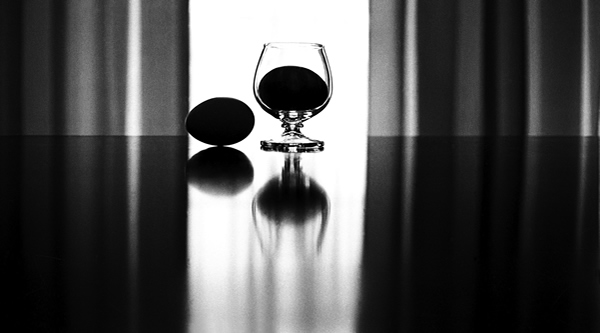
During these early years I thought of myself a “photographer” and thought that it was a “sin” to modify my images. I thought my duty as a photographer was to portray a scene as realistically as I could. Of course I now understand that everything I do modifies an image, but back then I believed my duty was to portray reality. Here is an image I created at age 17:
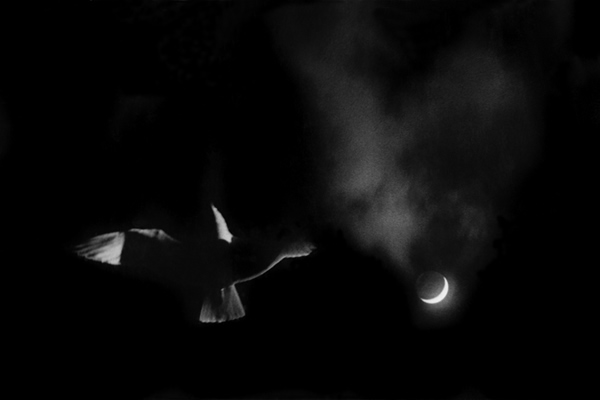
Thinking like a “photographer” was holding me back from developing my artistic abilities, but there also was another barrier that was preventing me from growing. I found myself not just studying the works of the great masters, but also trying to imitate their techniques and sometimes even their shots! Ansel Adams was my photographic hero back then and I remember how proud I would be when someone would look at one of my images and say “this reminds me of Ansel Adams’ work!” But something happened years later that would change how I felt about such a comment.
I was attending Review Santa Fe, this is where selected photographers show their portfolio to experts in the field and receive comments and suggestions. I was showing my work to the last reviewer of the day and he looked at my work, roughly pushed it back to me and said: “it looks like you’re trying to copy Ansel Adams.” I replied that I was, that I loved his work.
He then something very profound to me, he said: Ansel’s already done Ansel. What can you do that shows your unique vision?
Ouch! That comment really stung and I was so hurt that I could not hear his message for a very long time. But finally its meaning became clear to me; was my life’s ambition to be the world’s best Ansel Adams imitator? Was that all that I hoped to achieve with my art?
For years the comment: “your work reminds me of Ansel Adams’” was a huge compliment. Now it was an insult and evidence that I had failed to develop my own vision.
This was a turning point in my artistic life. It was the moment I vowed to stop copying others and the moment when I wanted to be an artist and not a photographer.
But I had doubts about my own vision; did I have one? How would I find it? How would I develop it?
I could find no instructions on how to find your vision and so I developed my own plan. First, I would stop looking at other photographer’s work, something I call “photographic celibacy.” I reasoned that if I was to develop my own vision, I could not continue to immerse myself in other people’s vision because doing that caused me to copy their work, either consciously or subconsciously.
Next I started using different words; I started to refer to myself as an artist and I stopped using the phrase “taking pictures” and would start saying “creating images.” It was a small thing, to change my words, but it served to remind me of my goals and what I wanted to achieve.
I also discarded my old belief that it was wrong to modify my images. It seemed to me that the entire purpose of an artist is to portray what they see through their vision, not with their eyes. So now when someone asks if I “manipulate” my images, I say “Yes!” and explain.
I also decided that I’d start ignoring what others thought of my work and focus only on what I thought of it. In the past I’d show people my images, ask them which ones they liked, and then I’d find myself going off in that direction. The problem with this approach is twofold: first you can never please everyone and so one day I was off in this direction and the next day I was off in another. Secondly, art should be about passion and that means I needed to pursue the images that I was passionate about.
After I stopped listening to others I stopped producing work that I did not love, no matter how much others liked it. If you have to choose between pleasing yourself and pleasing others, always choose to please yourself. At least when it comes to art!
So that was my program to find and develop my own vision. It was a very difficult and frustrating process and it took me several years, but gradually I started to recognize my vision. The first image that I created with this new outlook and philosophy was The Angel Gabriel:
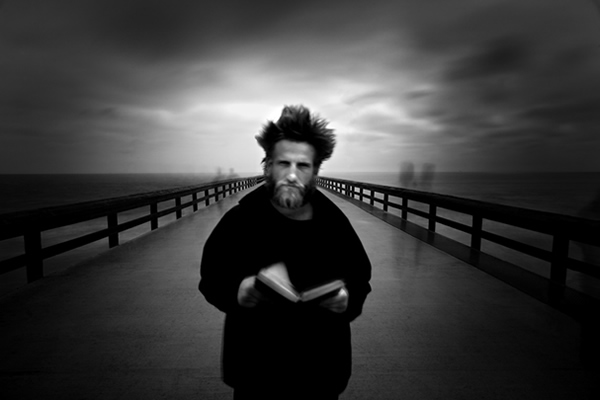
This was the first time that I had purposefully created something from my vision, and it was the first time I modified the image to bring the shot into compliance with that vision.
It’s been about five years now, since I made that determination to find my own vision. It’s not a destination and I’m still working on it, trying to see uniquely and to further develop my vision.
Have you ever felt like “I’m not able to convey my inner most thoughts to my subjects completely”?
I never consider the viewer when creating my art. I create for myself, not the viewer and my only obligation is to myself.
Nor do I explain my images to the viewer, they are what they are and each person is free to find their own meaning in them.
Does my art have meaning?
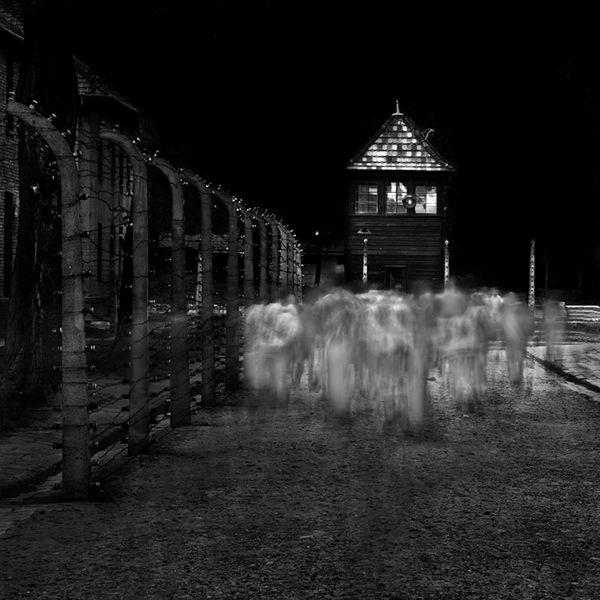
Sometimes my work has obvious meaning, such as “The Ghosts of Auschwitz and Birkenau.”
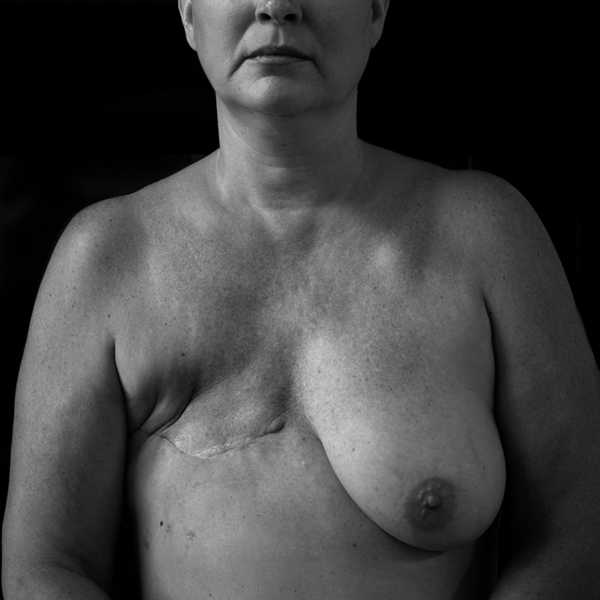
Or my series “Linnie, A Portrait of Breast Cancer.”
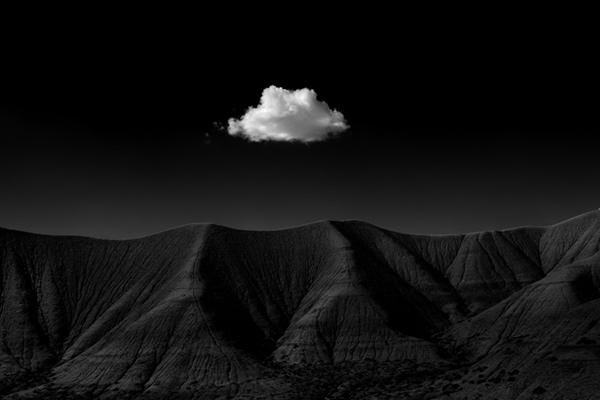
But often I’m simply creating beautiful images which may or may not have a deeper meaning. When people ask me what my images mean, or what was I trying to convey to the viewer, I think of these words from the song “With A Little Help From My Friends” by the Beatles: I can’t tell you, but I know it’s mine.
So no, I don’t have a problem conveying my inner thoughts to the viewer, simply because I’m not trying to convey anything. My images are what they are.
In your words what makes Fine Art Photography so special?
I look at great fine art images and I think; isn’t it obvious why these are so special? Can paltry words improve upon what these images convey?
I do not think words are adequate or needed. If a person cannot see the beauty in great images, words will not help.
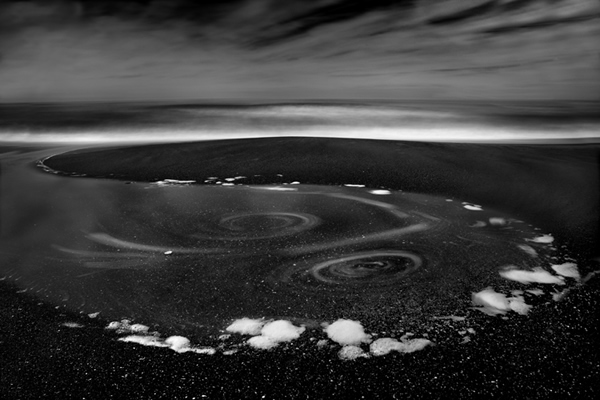
When I am seeing your work, you have traveled a lot. Which country you like and why?
Most of my travel has been inside the US and even then I’ve only seen a small part of my country. I have done some international travel: I visited Japan when my son who was in the military was stationed there, we went to Ukraine to visit another son who was serving in the Peace Corps, and then to England where we took a family vacation. I loved all three locations for different reasons.
The Japanese are so very polite and considerate and all I had to do was raise my camera on the street and hundreds of people would come to a stop rather than walk in front of me and ruin the shot. The Ukrainians are generous to a fault, and would give you their last bit of food and the shirt off of their backs. I love the quiet resolution of the British and the depth of history that is always visible to the eye. All three trips were incredible experiences that produced some wonderful images and memories for me.
But my favorite country would have to be the US and for obvious reasons; this is my home. The wide range of geography is just amazing from our wonderful coasts to Death Valley, from the Great Lakes to the Rocky Mountains. It is so vast that I doubt I’ll be able to see it all in my lifetime.
And then there is the American spirit, we are a very young country compared to the rest of the world, but we have such an independent “can do” spirit that makes all things possible.
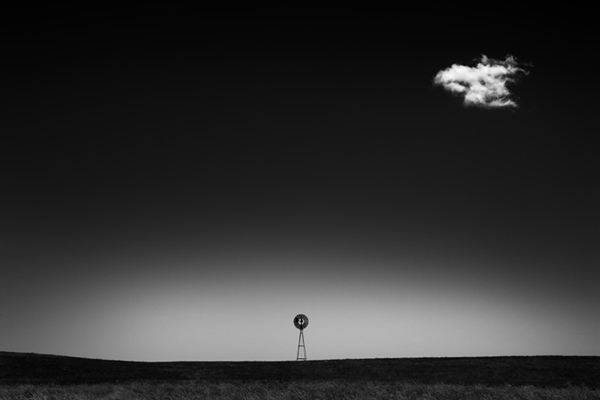
Most of your pictures are in Black & White any reason behind that?
I have always been drawn to black and white, even as a boy. But why? I think my artist statement sums it up best:
“I am often asked, “Why black and white?” I think it’s because I grew up in a black-and-white world.Television, movies and the news were all in black and white. My heroes were in black and white and even the nation was segregated into black and white. My images are an extension of the world in which I grew up.“
The truth is that while color catches my eye, black and white holds my attention.
I’ve only exhibited (2) color images in my life, and both somewhat recently.


My color attempts were feeble and my heart just wasn’t in it. I’m a black and white guy, through and through, and I always will be.
For me color records the image, but black and white captures the feelings that lie beneath the surface.
In your language what it takes to make a Good Photograph?
I have a rule that describes the process of making a great image, it’s called “Cole’s Rule of Thirds” and it is: A great image is comprised of:
- 1/3 vision
- 1/3 the shot
- 1/3 processing
A great image begins and ends with your vision. Vision is the sum total of our life’s experiences that make us see things uniquely. When we look at a scene, it’s the way we instinctively see it in our minds eye. Our job as an artist is to bring that scene into compliance with our vision.
When we pursue an image with vision, then equipment and process becomes the servant and the creative process the master. It’s only then that great images can occur.
Vision is everything.
Looking back at your work, which of your pictures or stories make the strongest impression on you?
Each of my images has a story behind them. Sometimes the story is significant and everyone can relate to it, such as The Angel Gabriel, and other times the story is a simple and personal one and the image forever reminds me of it.
It would be impossible to choose just one, but here are several that I guess you could say are my “favorites.”

Harbinger : The story behind this image is one of a father and son, and one of fleeting opportunity that quick action captured. Full Story here
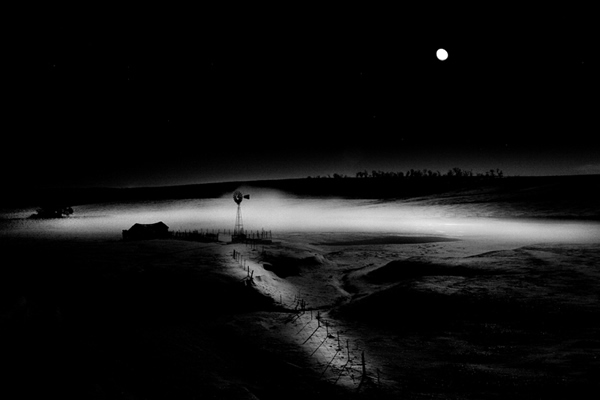
Windmill in Moonlight: This image will forever remind me to “Always Stop” when you seen an opportunity, for that opportunity will never repeat itself. Full Story here
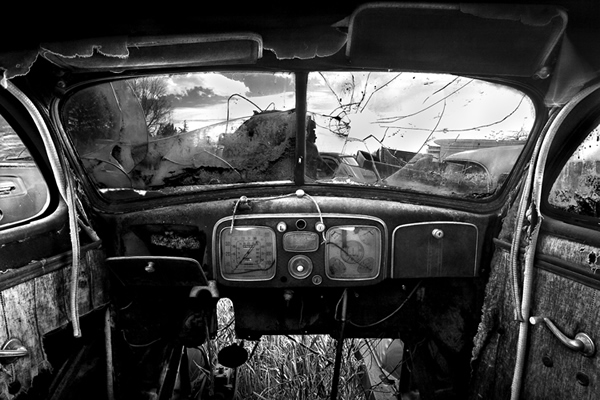
Old Car Interior: This image caused me to stretch my Photoshop capabilities beyond what I had done before. My Photoshop skills are so very primitive that Popular Photography called me “The Photoshop Heretic.” Full Story here
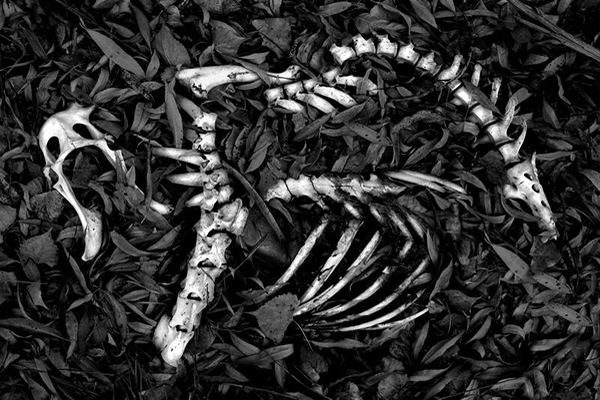
Skeleton: This is one of my favorite images, but rarely appreciated by others. It reminds me to always be looking for photographic opportunities; they are all around you, even at your feet.

The Angel Gabriel: I generally do not believe that the story should be necessary to make an image great, but this is a memorable story that everyone loves and remembers. Full Story here
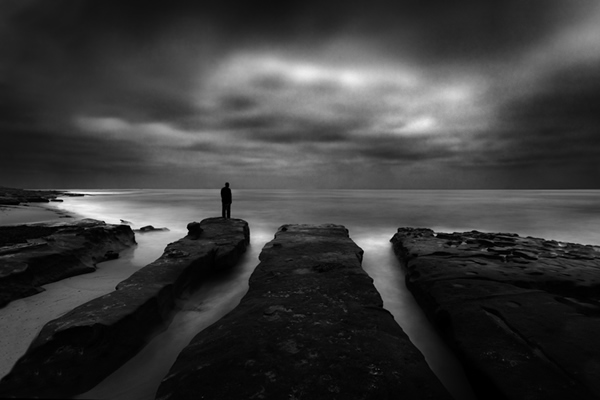
Lone Man: This is a series that actually has some meaning behind it, here is my artist statement. Full Story here. In this blog post I describe how I created it. Click here
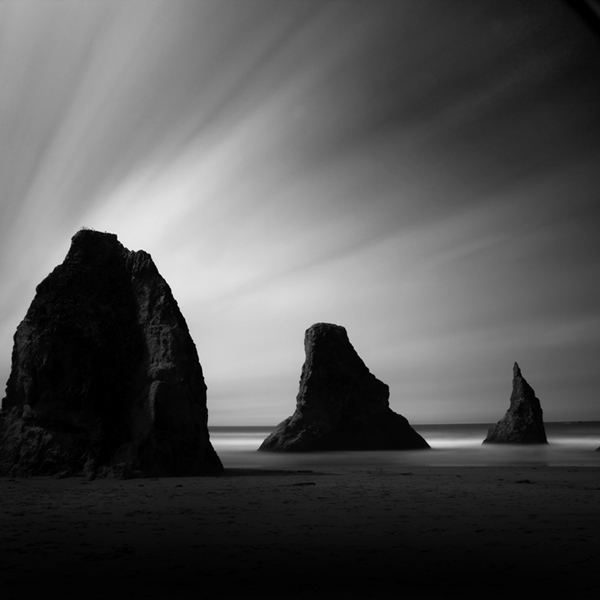
Monolith: Every September I go to Bandon Beach in Oregon. These Monoliths dominate the beaches there and they remind me of my childhood days reading Thor Heyerdahl’s book “Aku Aku ” which tells the story are the giant stone statues on Easter Island. Here is a video of my Monolith series.

Ceiling Lamp, Mourning Dove Ranch: This is my favorite image from my “Ceiling Lamp” series that reminds me that art does not need to be serious or herald a cause. Sometimes it can be frivolous and fun. Entire Portfolio here.
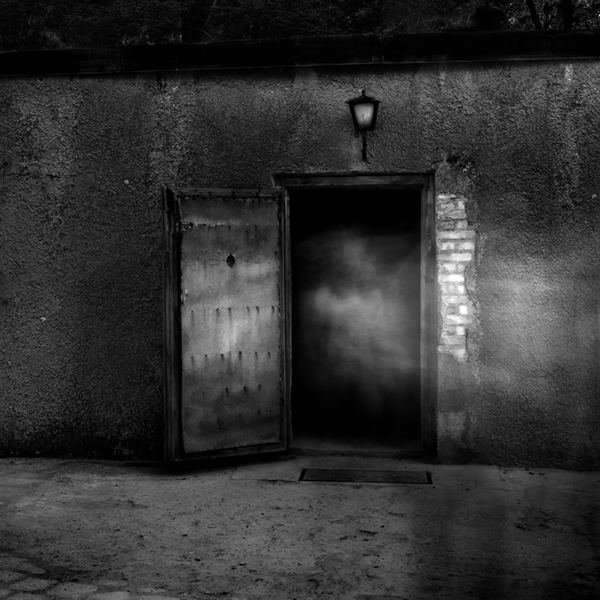
Auschwitz No.13: I think this is the most poignant image from my series “The Ghosts of Auschwitz-Birkenau” because it represents spirits leaving the gas chamber at Auschwitz.

But this is my favorite image from the series. See the complete series

Clouds:
This was another experience that reminds me to “always stop.” The family had just returned from a 2 week trip to Japan and we had been on the plane and the road for a very long time. As we approached home, just 5 minutes away, I saw this cloud structure and wanted to stop. But I knew I would incur the wrath of the family who were tired, hungry, jet-lagged and cranky.
I debated and decided not to stop. Then I remembered my past experience with Windmill in Moonlight and my resolve to “always stop.” I stopped and endured the yelling and screaming from the family, and in 5 minutes was on my way home and one of my most loved images was captured. Click here for large image
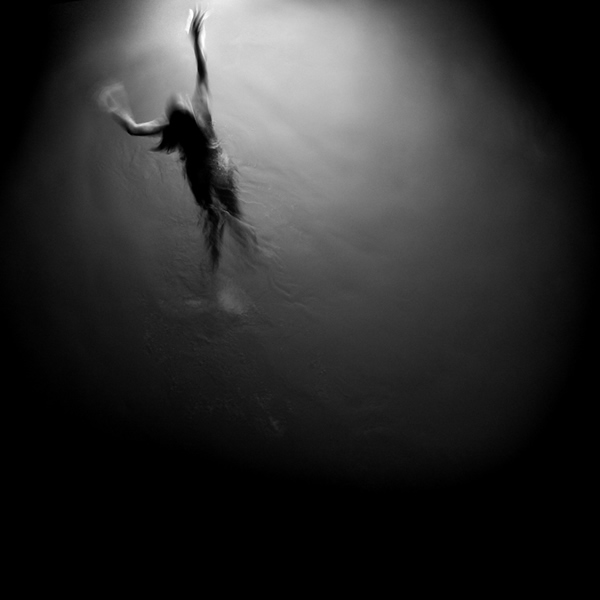
Swimming Towards the Light: This is one of my all-time favorite images, it’s my daughter in a swimming pool. I love it for the simplicity in the image and the message.
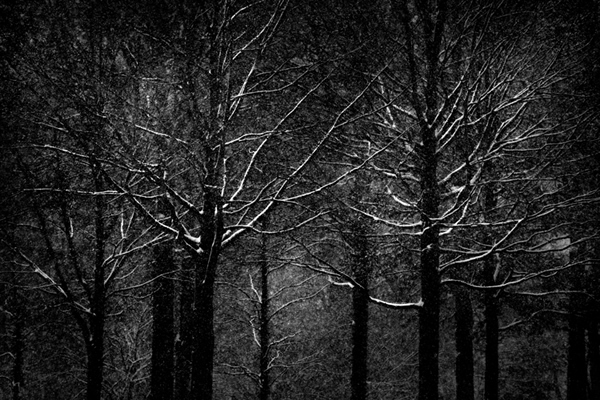
Blizzard:
This will forever remind me of the blizzard I was caught in one Spring day on the DC Mall and my attempt to avoid frostbite by entering the International Monetary Fund building just off the mall. I had about 3 minutes reprieve before a large female security guard threw me out of the building!
But it this image made it worth it!
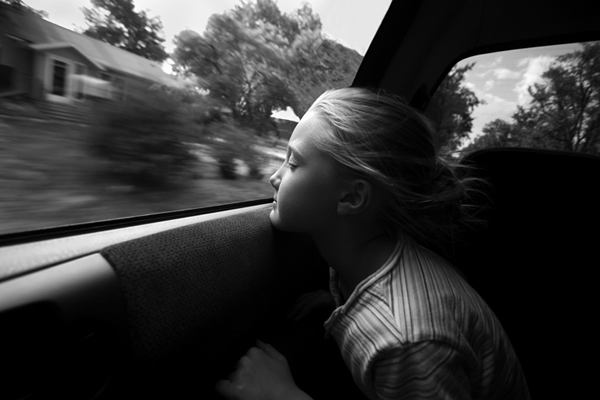
Windsurfing: This was a spontaneous moment, photographed while driving and hoping I could get the shot before my daughter became aware of the camera. I think most people can relate to this image.
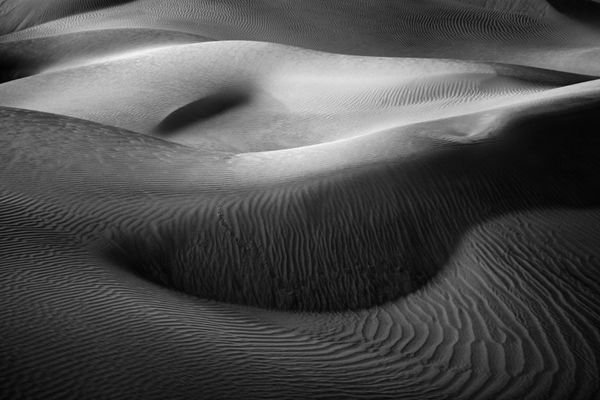
Dunes of Nude: I’ve become attracted to sand dunes and their abstract resemblance to the human nude. This is my favorite from the series “The Dunes of Nude.” More Images
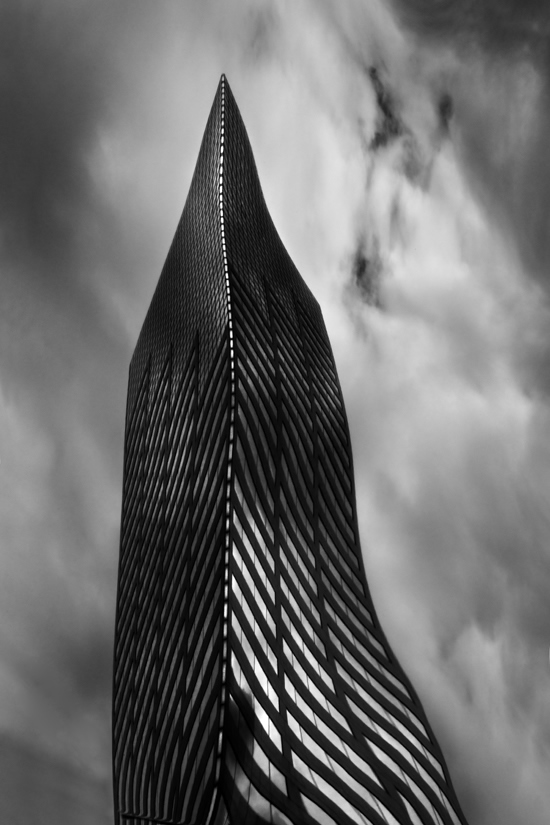
Fountainhead: This is my favorite image from the series “The Fountainhead.” I’ll always remember how much our rights as photographers have been limited by 911. I shot these images in about 15 cities and was molested about as many times. Full Story here
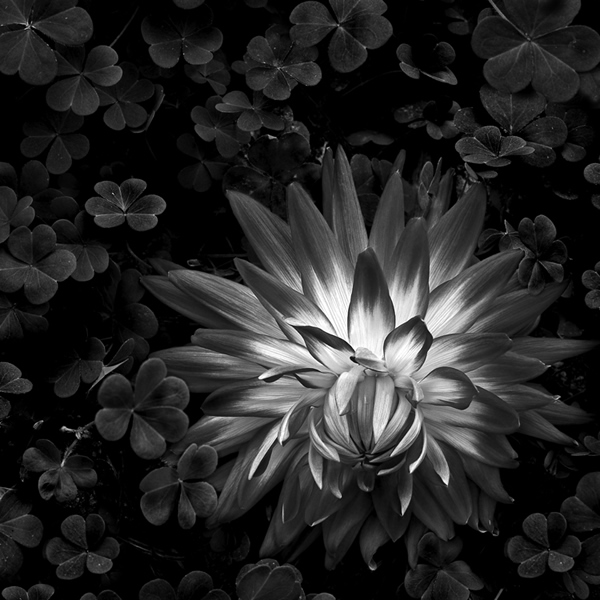
Flaming Dahlia: A simple and beautiful image of a Dahlia that was thrown away in a green house. One man’s trash is another’s treasure?. Full Story here
The best achievement/compliment you received so far and what is your intake about Awards and Compliments?
I used to meticulously maintain my resume, listing all of my awards, publications and achievements. But at a certain point it became clear to me that none of that mattered, and that the only thing that really matters is how I felt about my work.
For that reason I have retired my traditional resume and now say this:
My art has appeared in many exhibitions, publications and has received numerous awards. And yet my resume does not list those accomplishments, why?
In the past I’ve considered those accolades as the evidence of my success, but I now think differently. My success is no longer measured by the length of my resume, but rather by how I feel about the art that I create. While I do enjoy exhibiting, seeing my work published and meeting people who appreciate my art, this is an extra benefit of creating, but this is not success itself.
I believe that the best success is achieved internally, not externally.
So what honors do I value? The honors of a friend who loves my work enough to hang it in their home. Or the appreciative comments I receive from Holocaust survivors who see my work from Auschwitz-Birkenau. Those are the honors I value most.
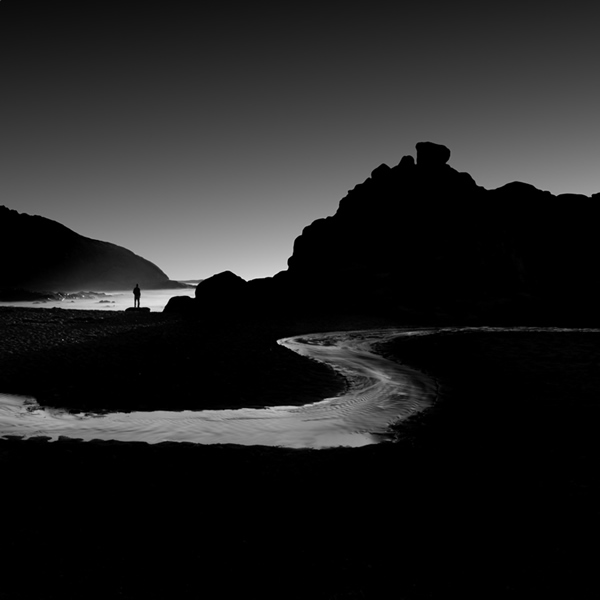
“I believe that the best success is achieved internally, not externally” – I feel it is a Saint like saying, any words for It?
When we are young, we sometimes pursue fame and fortune. As you get older, you realize that these are not the keys to happiness. There is nothing wrong with achieving fame and fortune, when they are the by-products of sincere and honest work. But when a person seeks after these things, my experience has taught me that they will be a hollow achievement.
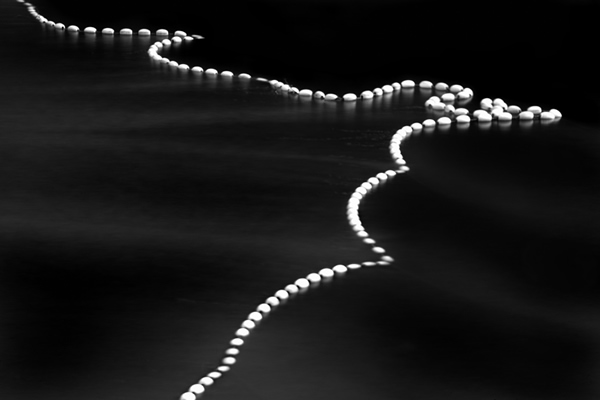
Which photographers have inspired you?
When I was young, Adams was the photographer I most admired but I also closely followed Weston, Caponigro, Strand and Bullock. Later in life I was amazed by the long exposure work of Alexy Titarenko and he was one of the main reasons I pursued long exposures.
But the man whose attitudes I admire the most is Edward Weston. I have read his Day Books many times and they never cease to inspire me. It was his independent attitude that has shaped much of my thinking about my art.
My favorite story that illustrates Weston’s attitude is told by Ansel Adams upon seeing his work for the first time:
“After dinner, Albert (Bender) asked Edward to show his prints. They were the first work of such serious quality I had ever seen, but surprisingly I did not immediately understand or even like them; I thought them hard and mannered. Edward never gave the impression that he expected anyone to like his work. His prints were what they were. He gave no explanations; in creating them his obligation to the viewer was completed.”
From Weston I have learned that it doesn’t matter who likes or doesn’t like your work, your opinion is the only one that matters.
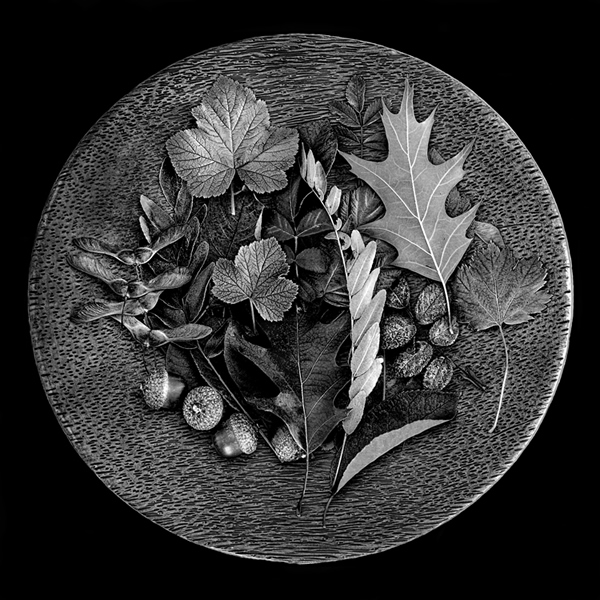
What Tips or Advice do you have for other aspiring photographers?
I always hesitate to give advice, because it comes from my perspective, but here are a few tips:
- Ignore the rules, and better yet, never learn them! They are restrictive and will only lead you to mediocre work that will look like everyone else’s that follow the rules.
- Develop your own vision and style and resist copying others. Don’t become an imitator, but a creator!
- Find projects that you have a burning passion for. If you don’t feel that way about your current project, change it!
- Do not accept the standard definition of success (fame, fortune, big name gallery representation and a published book) Define for yourself what success is and then purposely pursue it.
- Seek only to please yourself, because pleasing others is never success and is unfulfilling.
- Be a good person, this will help you be a good artist.
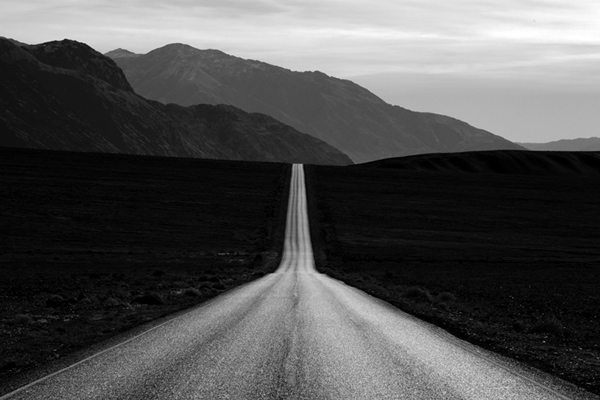
Quick Questions:
- What is your idea of happiness?
Having my family around me, some spare time to pursue my art and a few dollars in my pocket. - What is your greatest fear?
That I will hurt another person. - What do you consider your greatest achievement?
Raising five children who are good and successful. - Where would you like to live?
La Jolla in California, but only after about 5 million people move away first! - What is your most marked characteristic?
I have strong opinions and always think that I’m right. - What do you most appreciate in your friends?
That they see past my failings. - Who are your heroes in real life?
People who have suffered great tragedies and yet have chosen to have a great attitude about life. - What is your present state of mind?
Harried. - Who are your favorite authors?
Harper Lee (To Kill a Mockingbird) - What is your favorite motto?
Have I done any good in the world today?
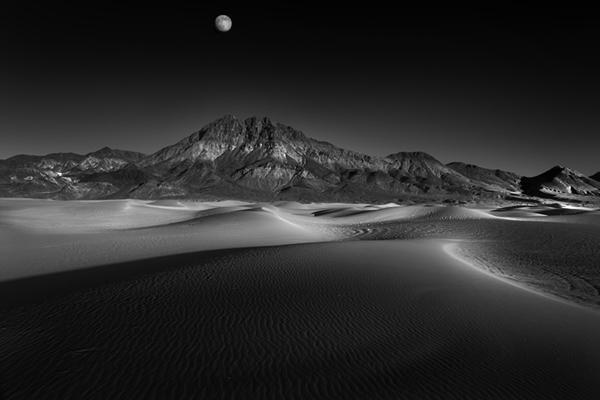
Thanks again for providing 121 Clicks with this opportunity to interview you. Any final thoughts for our readers?
I’ve enjoyed this interview, you have asked me some very good questions and it’s caused me to reflect on my work and motives. Thank you for this opportunity!
